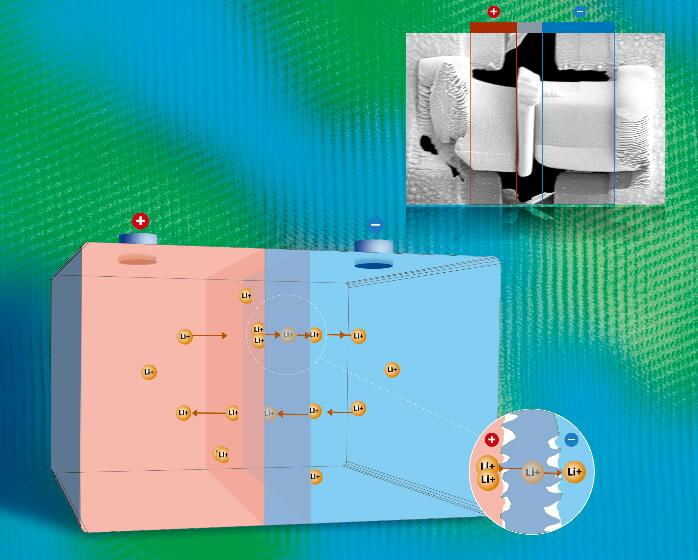SPECIAL TOPIC—Fundamental Physics Problems in All Solid State Batteries
SPECIAL TOPIC—Fundamental physics problems in all solid state batteries

2020, 69 (22): 226104.
doi: 10.7498/aps.69.20201542
Abstract +
High-throughput methods based on automation technology and computer technology can quickly provide tens of thousands of scientific research data, which poses a new challenge to the scientific and efficient management of scientific data. Rechargeable secondary batteries are the keys to the development of electric vehicles and the first choice of wind/photoelectric energy storage. The discovery of new battery materials plays an important role in improving the performance of the secondary batteries. New methods based on big date can be introduced into the screening and design of battery materials to accelerate the development of secondary batteries. This work introduces the development and application of battery material database from the aspects of data acquisition, construction of general and specific battery material database, and the challenges faced by the battery material database.
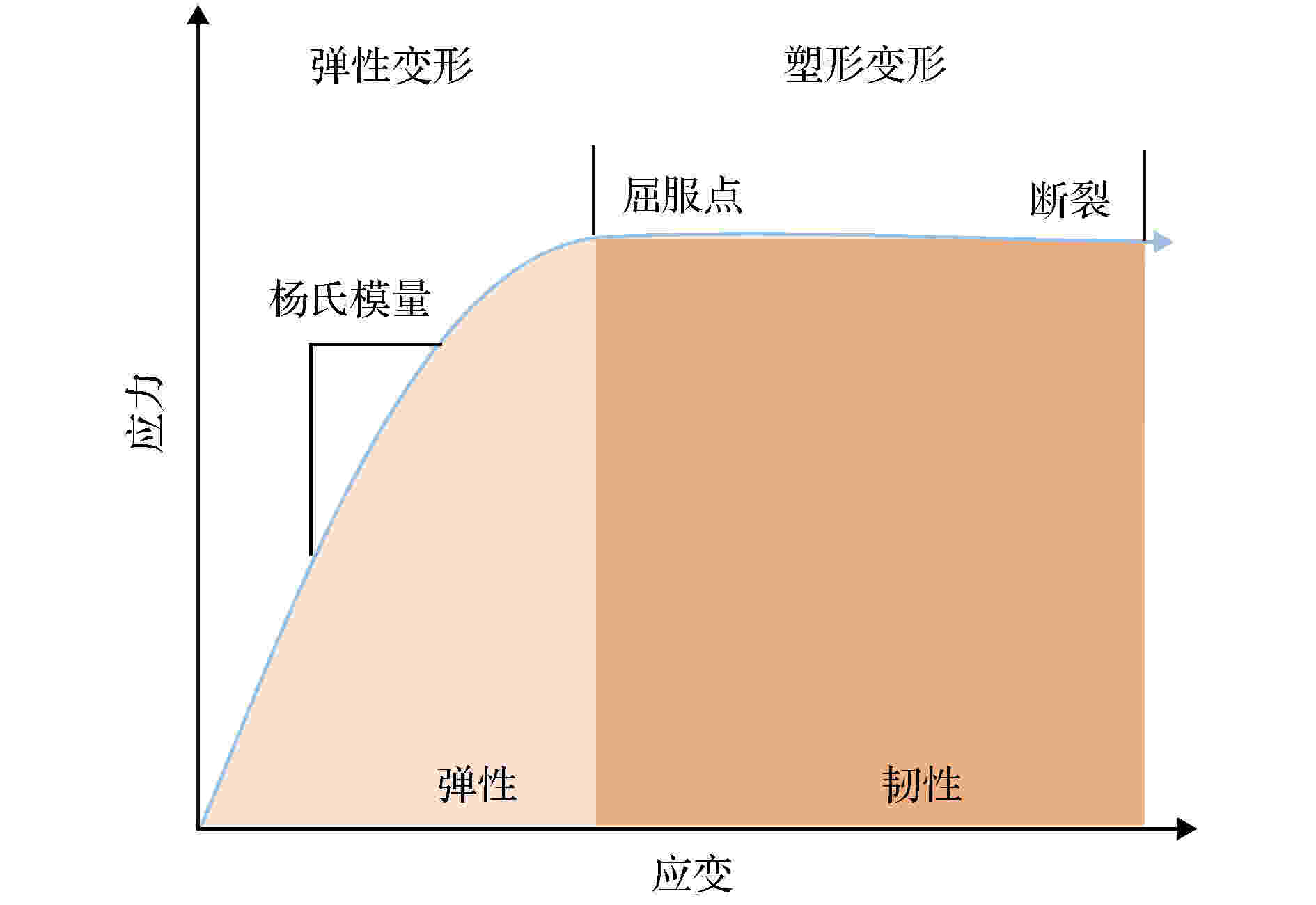
2020, 69 (22): 226201.
doi: 10.7498/aps.69.20200713
Abstract +
The mechanical properties of electrode materials and solid-state electrolytes in solid-state batteries (SSBs) have an important influence on the mechanical stabilties of SSBs. Mechanical failures in SSBs on different scales and in different components will occur once the stress inside SSBs exceeds the materials’ strengths, which seriously deteriorates the electrochemical performances of SSBs. From the perspective of stabilizing the mechanical stabilities of SSBs, in this review we describe the influences of the mechanical properties of each component in SSBs on the mechanical stabilites of SSBs, and we analyze the factors that affect the mechanical properties of materials. In addition, we also discuss the mechanical failures of SSBs during cycle, including electrode materials’ or solid-state electrolytes’ fractures, electrode-electrolyte contact losses, and short-circuits due to lithium dendrites. Finally, we summarize some common strategies to mitigate the mechanical failures in SSBs, and look forward to the future research directions in this field. Overall, the mechanical failures in SSBs and their strategies discussed in this review will help researchers build SSBs with higher energy density, longer life and higher safety.
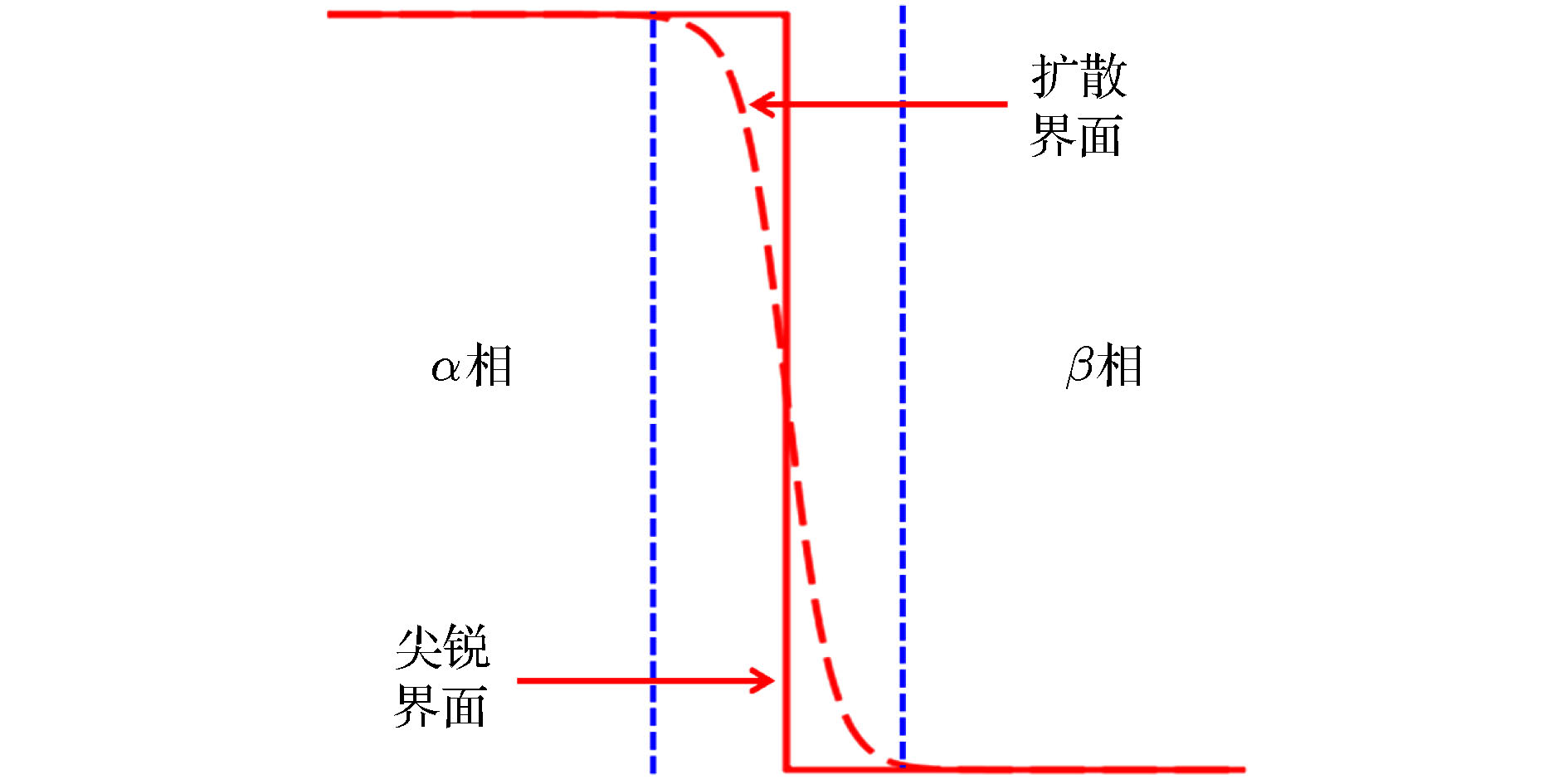
2020, 69 (22): 226401.
doi: 10.7498/aps.69.20201411
Abstract +
With the rapid progress of computer technology, computational research exhibits significant advantages in investigating microstructure evolution of material systems. As a computational research method of material dynamics, increasing attention has been paid to the phase-field model because of its avoidance of complicated interface tracking and convenience of dealing with applied fields. Theoretical framework of the phase-field model and three current phase-field models for multicomponent multiphase systems (the Carter, Steinbach, and Chen models) are introduced and reviewed in terms of interpretation of phase-field variables, way of coupling thermodynamic database, way of constructing the free energy density, and evolution equations. This review only focuses on the application of the phase-field model in electrochemical energy storage materials, and introduces its existing phase-field simulation results, which demonstrates that the phase-field model has tremendous potential in describing the microstructure evolution (anisotropic transport and phase separation, elastic and plastic deformation, crack propagation and fracture, dendrite growth, etc) and improving the performance of electrochemical energy storage materials. Finally, from two aspects of improving phase-field theory and extending application, future development trend and problems to be solved of phase-field simulations in electrochemical energy storage materials are discussed and looked ahead.
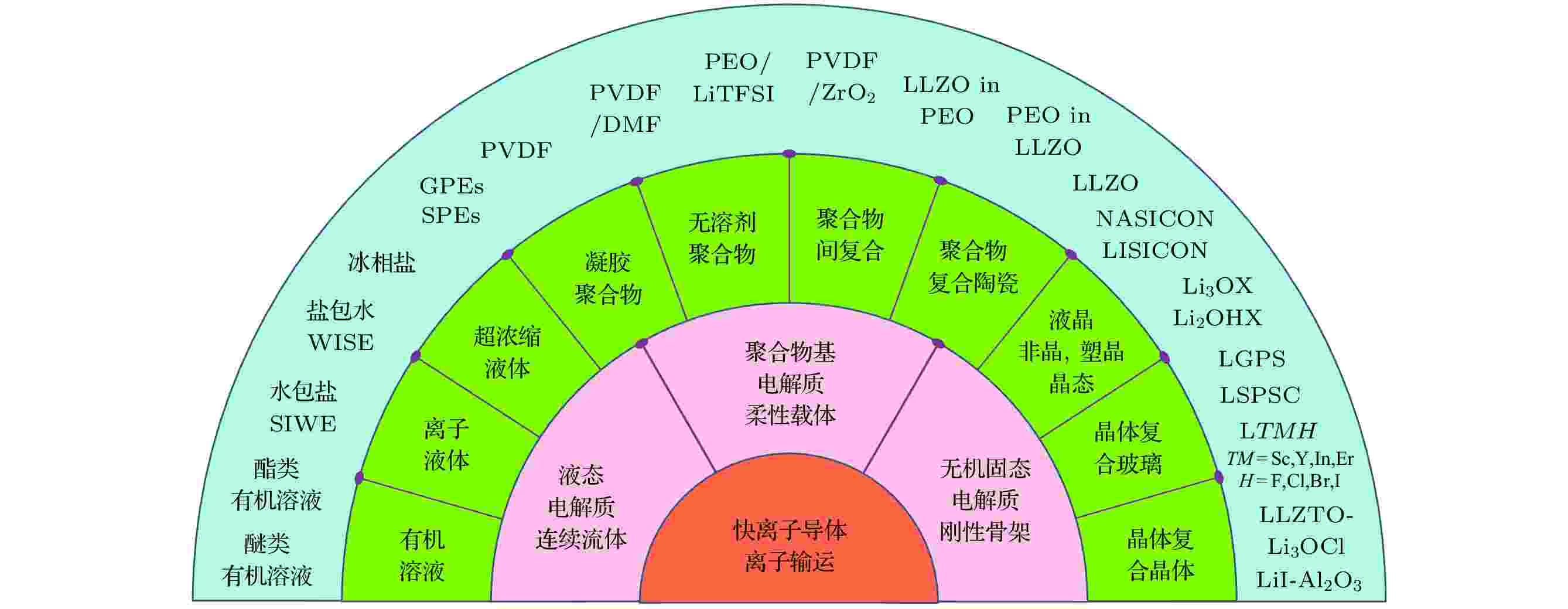
EDITOR'S SUGGESTION
2020, 69 (22): 226601.
doi: 10.7498/aps.69.20201519
Abstract +
Analyzing the microscopic physical image of the ion transport characteristics has important guiding significance for improving the ion conduction behavior in the electrolytes. In this article, we summarize the factors influencing the physical images of ion transport in liquid, organic polymer and inorganic solid electrolytes. The descriptive factors relating to the ion transport physical image are refined by analyzing various transport physical models and comparing the ion transport mechanisms in the three types of electrolytes. In the evolution of the physical state from continuous fluid to flexible carrier to rigid framework, the ion transport image is characterized by the inherent properties of various electrolytes and external conditions, in which the disorder of the medium plays a dominant role. Revealing the relationships between the electrolyte structure and dynamic behaviors with the ion conductivity and transport process is conducive to the development of the method of controlling the dynamic performance of conducting ion based on the microphysical image of ion transport.

COVER ARTICLE
2020, 69 (22): 226801.
doi: 10.7498/aps.69.20201160
Abstract +
The essence of the scientific problem in all solid-state batteries lies in the properties of the introduced solid electrolyte and the existence of a new solid-solid interface. Starting from the structure-property relationship, the structural evolution of the solid-solid interface and the electrolyte itself, and the matter transport process determine the performance of the all-solid-state battery. With the continuous enrichment of solid electrolyte materials, the current problems in all solid-state batteries are mainly concentrated on the solid-solid interface. The composition and structure at the interface limit the performance of all solid-state batteries. According to the different situations of solid-solid interface contact, this article summarizes and discusses the structure and matter transport at the solid-solid interface in all solid-state batteries according to the three levels of solid-solid interface physical contact, chemical contact and surface modification. Finally, the relationship between local symmetry and material properties under the macroscopic complex system is discussed from the perspective of the functional origin of functional materials.
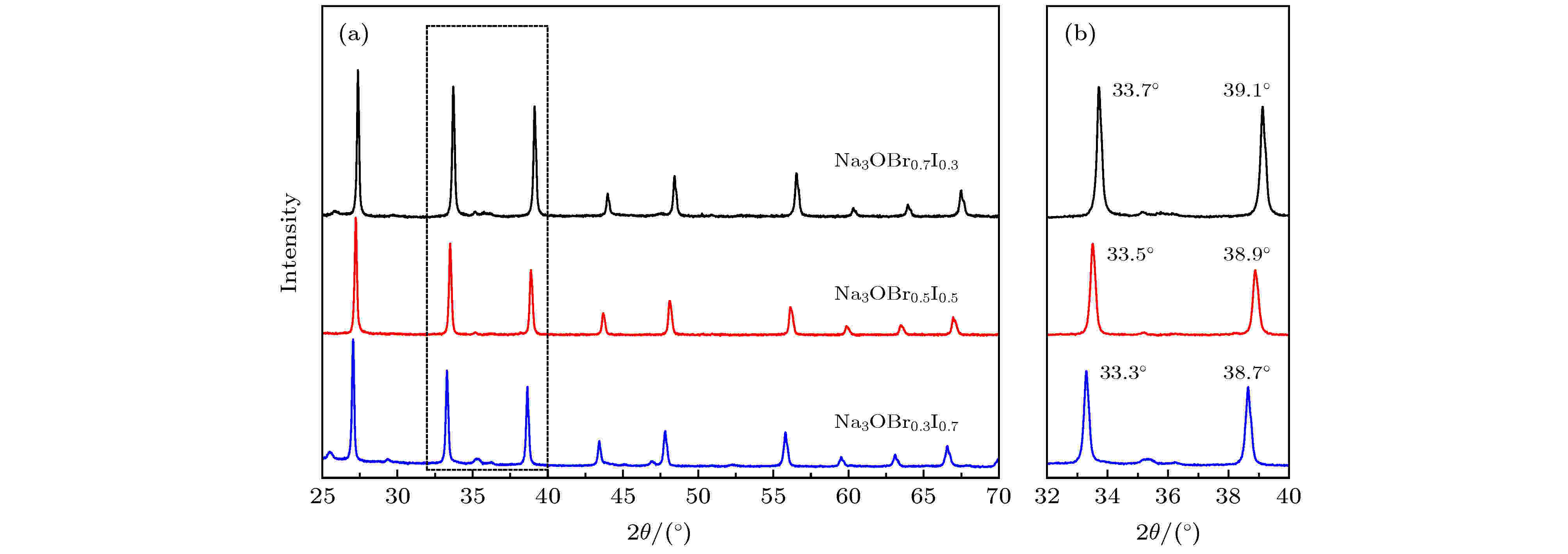
2020, 69 (22): 228201.
doi: 10.7498/aps.69.20201227
Abstract +
All-solid-state sodium batteries are promising candidates in energy storage applications due to their high safety and low cost. A suitable solid electrolyte is a key component for high-performance all-solid-state sodium battery. Current inorganic solid electrolytes mainly include oxide- and sulfide-based electrolytes. However, the oxide-based electrolytes require to be sinetred above 1000 ℃ for high ionic conductivity, and most sulfide-based electrolytes can react with H2O torelease toxic H2S gas. These features will hinder the practical application of all-solid-state sodium batteries. In recent years, novel sodium ionic conductors have appeared successively. Among them, anti-perovskite type of Li/Na ionic conductor has received a lot of attention because of its high ionic conductivity and flexible structure design. Nevertheless, the synthesis of Na-rich anti-perovskite Na3OBrxI1–x (0 < x < 1) is complex, the ionic conductivity at room temperature is relatively low, and its electrochemical properties remain unknown. Here in this work, the phase-pure Na-rich anti-perovskite Na3OBrxI1–x is synthesized by a facile synthesis way. The X-ray diffraction patterns show that the anti-perovskite structure without any impurity phase is obtained. Alternating-current (AC) impedance spectrum is used for measuring ionic conductivity of electrolyte pellets after thermally being treated at around 100 ℃. The Na3OBr0.3I0.7 exhibits an ionic conductivity of 1.47 × 10–3 S/cm at 100 ℃. Unfortunately, the ionic conductivity experiences a sharp drop with the decrease of temperature, which may be related to the change of structural symmetry and Na sites in the structure revealed by solid state 23Na NMR. In particular, the ionic conductivities of Na3OBrxI1–x demonstrate the potential applications at medium temperature (40-80 ℃ in which the ionic conductivity of Na3OBrxI1–x is close to or higher than 10–4 S/cm) for all-solid-state sodium battery. Therefore, the compatibility against Na metal and the electrochemical performance in all-solid-state batteries have been evaluated. Since Na3OBrxI1–x is not “Na-philic”, the resistance in impedance of the Na/Na3OBr0.5I0.5/Na is very high. However, after modifying the interface by ionic liquid, the Na3OBr0.5I0.5 exhibits good compatibility against Na metal and tiny ionic liquid also leads to high initial discharge specific capacity of 190 mAh/g and excellent cycling stability (around 127 mAh/g after 10 cycles) in the TiS2/Na3OBr0.5I0.5/Na-Sn solid-state battery. The capacity decay maybe results from the inferior interfacial contact between the solid electrolyte and the electrode materials because the electrode materials in this system experience large volume change during cycling. The successful operation in solid-state sodium batteries indicates that the Na3OBrxI1–x is feasible to be used as a sodium solid electrolyte, which is of great importance for practical application of Na-rich anti-perovskite solid electrolytes.
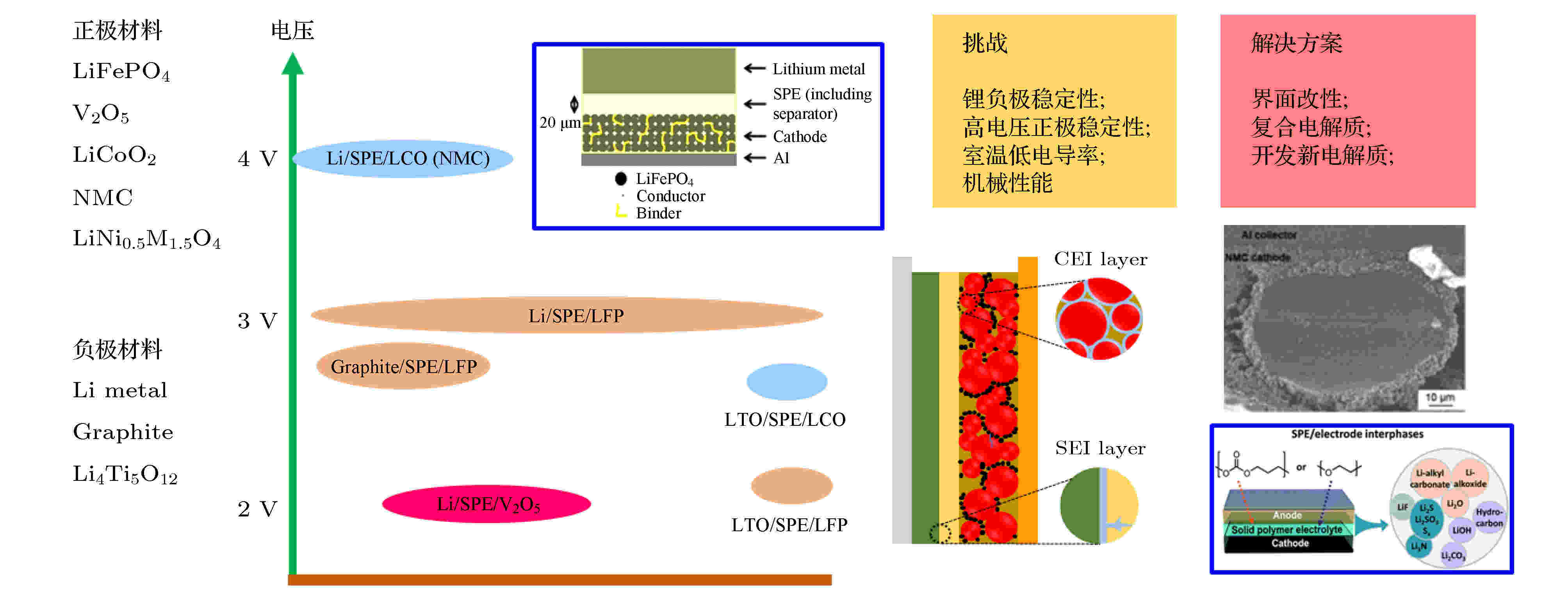
2020, 69 (22): 228202.
doi: 10.7498/aps.69.20201588
Abstract +
Polyethylene oxide(PEO) based solid-state batteries have high safety and high energy density, making them suitable for next-generation energy storage devices. However, their energy density reaches a limitation due to the narrow electrochemical window of PEO solid electrolyte. The electrode materials that are compatible with PEO electrolyte is less, thus handering it from being put into wide application. At the PEO/electrode interface, there are side reactions between anode/PEO and PEO cathode. Some strategies are proposed to reduce the side reactions, electrochemical performances of solid-state batteries are improved. To understand the change of interface, several advanced characterizations are employed, which can offer scientific evidence of increasing the interface stability in the future.

2020, 69 (22): 228203.
doi: 10.7498/aps.69.20201552
Abstract +
All solid-state lithium batteries demonstrate excellent characteristics of high safety and energy density, which make them very promising energy storage devices. Among various kinds of solid electrolytes, rigid-flexible coupling composite electrolyte combines the advantages of rigid solid inorganic ceramic electrolytes, i.e., excellent room temperature ionic conductivity, and of flexible solid polymer electrolytes, i.e., the flexibility, and thereby is considered to be one of the most ideal electrolyte candidates for all solid-state lithium batteries. Dispersing 0- or 1-dimensional inorganic fillers is a widespread method to fabricate rigid-flexible coupling composite, where the ionic conductivity of polymer can be improved by one order of magnitude mainly due to the decreased degree of crystallinity. However, aim to further increase the ionic conductivity by increasing the filler content cannot be accomplished because of the fillers' tendency to aggregation. what's more, the highly conductive inorganic fillers are separated by the polymer phase and thus cannot form fast and continuous Li+ transportation channels. Accordingly, inorganic fillers which can provide percolated pathway for Li+ transportation and avoid aggregating are highly desirable. To this end, different from adding 0- or 1-dimensional inorganic fillers into polymer matrices, polymers can be cast into porous inorganic substrates, that is, 3-dimensional porous ceramic framework, to obtain organic-inorganic composite electrolyte, in which organic phase, inorganic phase, and organic/inorganic interfacial phase are all continuous for fast Li+ transportation. And meanwhile, its self-supported structure prevents the agglomeration of inorganic particles. In recent years, the 3-dimensional porous ceramic framework has been more and more frequently used in rigid-flexible coupling composite electrolytes. To have a deep insight into the positive function of 3-dimensional porous ceramic framework, in this review, we firstly reveal the mechanism of the huge improvement in the ionic conductivity and thermostability of the composite electrolyte. Then, we summarize the frequently used preparation methods of the 3-dimensional porous ceramic framework reported recently. Finally, for the future perspective of rigid-flexible coupling composite electrolyte development, we propose two feasible improvement strategies. This review can thereby provide great significance of designing solid electrolytes with comprehensive performance for all solid-state lithium batteries with high energy density and superior safety.
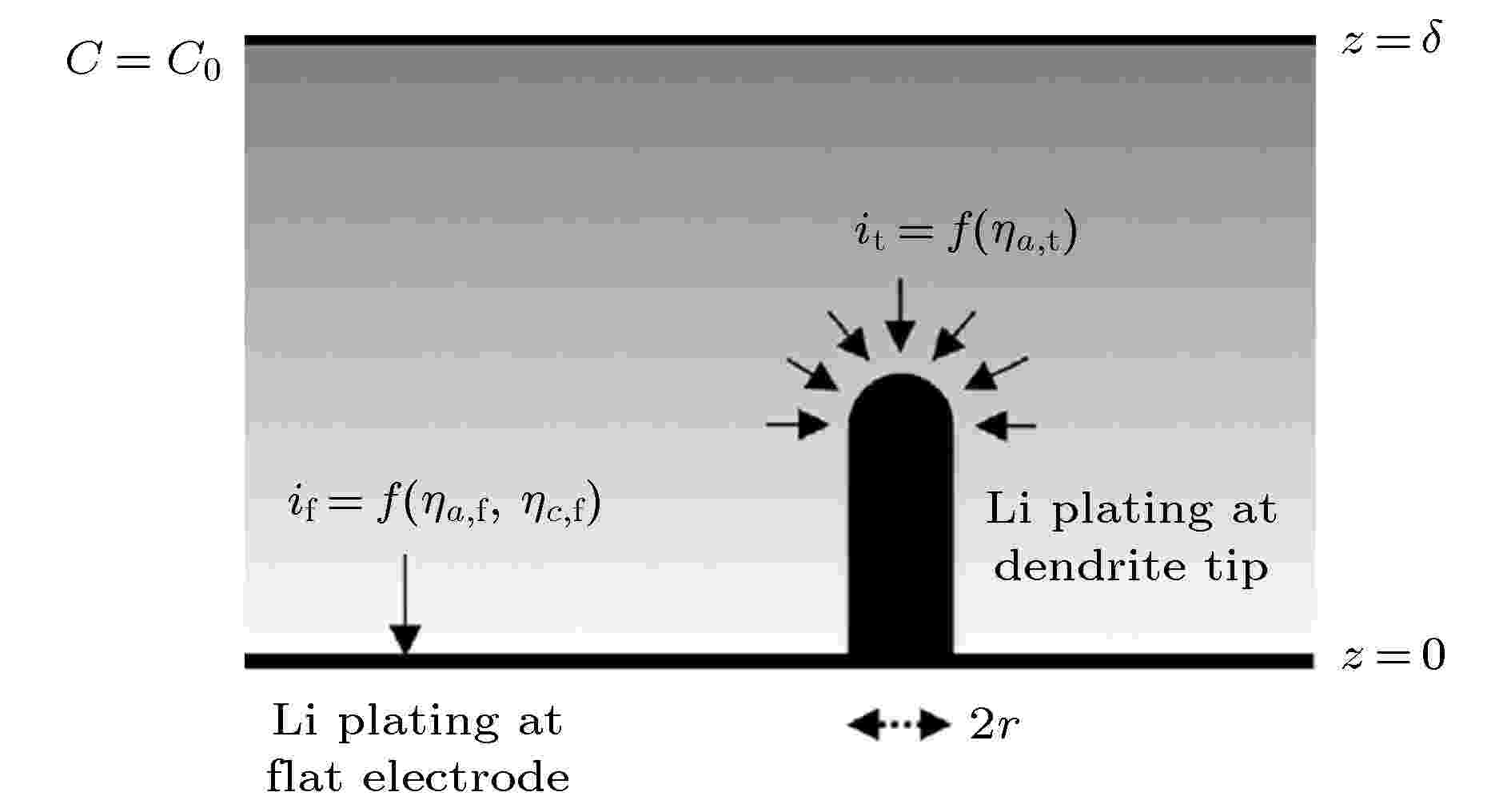
EDITOR'S SUGGESTION
2020, 69 (22): 228204.
doi: 10.7498/aps.69.20201293
Abstract +
Commercial lithium-ion batteries have inherent safety problems due to the usage of non-aqueous electrolyte as the electrolytes. The development of solid state lithium metal batteries is expected to solve these problems while achieving higher energy density. However, the problem of lithium plating still exists. This article reviews the deposition behavior of lithium metal anodes in solid-state batteries, and provides suggestions for high-energy-density and high-safety solid-state lithium batteries. This paper systematically summarizes the mechanism of Li deposition in polymers and inorganic solid state electrolytes, and discusses the strategies of controlling lithium deposition and preventing lithium dendrites and the characterization of Li metal anodes. In solid-state batteries, poor solid-solid contact between the electrolyte and the anode, defects, grain boundaries, cracks, pores, enhanced electric and ionic fields near the tip, and high electronic conductivity of the solid state electrolyte can all lead to lithium deposition, which may evolve into lithium dendrites. There are several strategies to control lithium deposition: 1). Use functional materials and structure design to induce uniform deposition of lithium, such as improving the solid state electrolyte/anode interfacial contact, using lithiophilic coatings or sites, and designing three-dimensional structure electrodes and solid state electrolytes. 2). Suppress the generation of lithium dendrites, such as limiting the free movement of anions in solid state electrolytes (especially polymer solid electrolytes), to reduce local space charge which induces lithium dendrites. In addition, optimizing the solid electrolyte synthesis process to reduce lithium dendrites caused by defects is also an important method. 3). Strategies for dendrites already formed are essential for safety concern. The dendritic deposition is one of the intrinsic properties of lithium. Thus, there is no guarantee that there will be no lithium dendrites, especially at high current density. Once lithium dendrites are formed, countermeasures are required. For example, improving the mechanical strength of solid state electrolytes, and using self-healing materials, structures, and cycling conditions are proposed to avoid safety hazards caused by lithium dendrites piercing. This article focuses on the control of lithium deposition. Suppressing lithium dendrites only solves a little problem of the application of lithium metal anodes. In the future, in order to use lithium metal as a negative electrode in practical all-solid-state batteries, many challenges need to be overcome, such as irreversible side reactions between lithium and other materials, safety and volume change of composite lithium anodes. In addition, in order to allow the laboratory's research results to be quickly transformed into applications, it is also necessary to establish battery design, assembly, and test standards that are in agreement with practical requirements. In short, all-solid-state lithium batteries still have a long way to go, but they have great potential for safe, high-performance, and low-cost energy storage systems in the future.
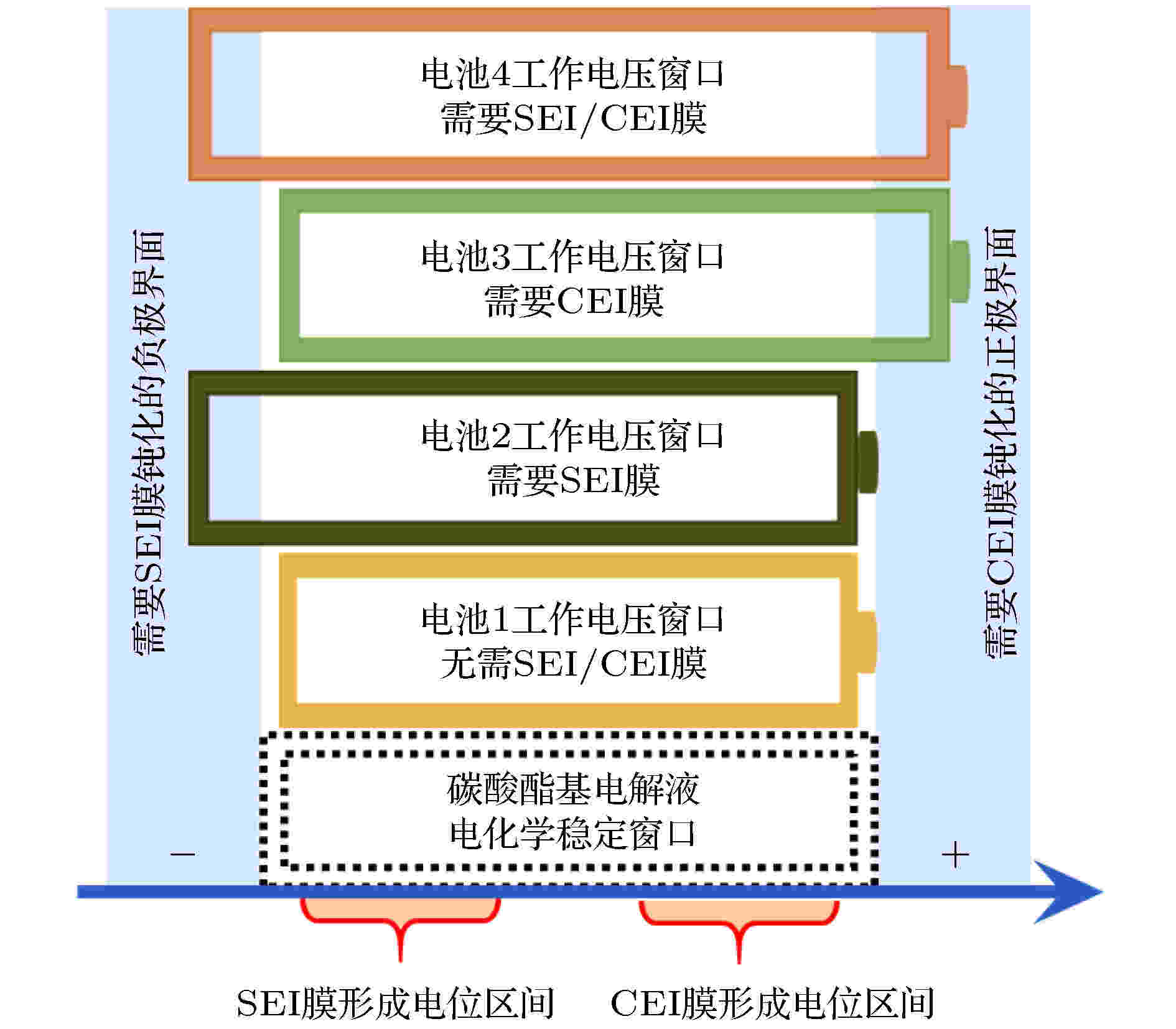
2020, 69 (22): 228205.
doi: 10.7498/aps.69.20201553
Abstract +
Electrolyte not only plays the role of conducting ions in lithium ion battery, but also the thin layer electrolyte formed on the electrode surface determines the stability of electrode/electrolyte interface to a large extent, thus affecting the cycling stability, rate performance and safety of the battery. The successful commercialization and widespread application of lithium ion battery is closely related to the solid electrolyte interface film formed by the decomposition of electrolyte on the electrode surface. In this paper, the electrochemical stability and decomposition mechanism of the interface electrolyte are briefly reviewed, aiming to draw more scientists' attention to the electrolyte and its interfacial properties.
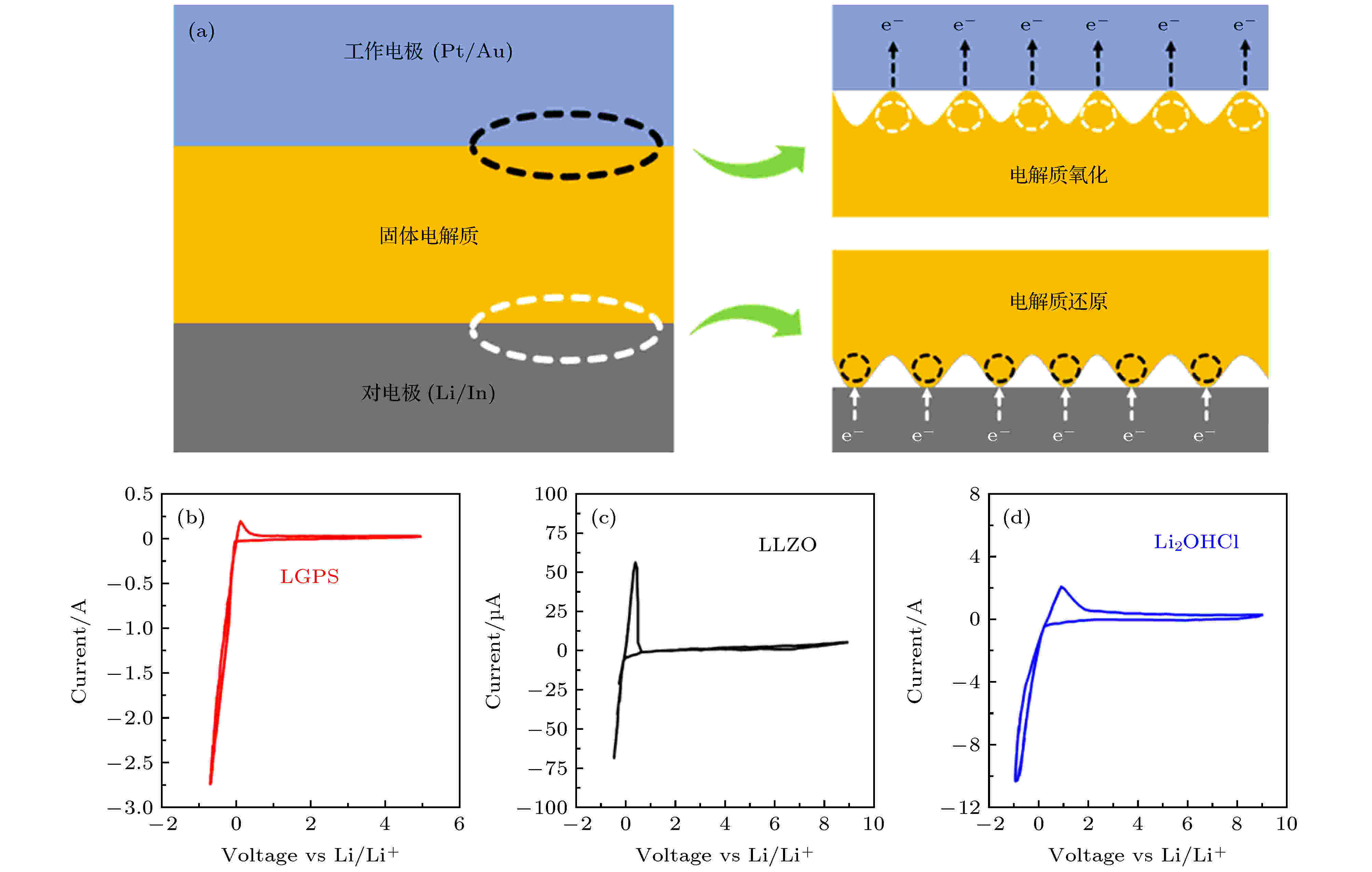
2020, 69 (22): 228206.
doi: 10.7498/aps.69.20201554
Abstract +
Compared with the lithium-ion battery based on the non-aqueous electrolyte, all-solid-state lithium battery has received much attention and been widely studied due to its superiority in both safety and energy density. The electrochemical window of solid electrolyte determines whether the electrolyte remains stable during the cycling of the high-voltage battery. Current solid electrolytes typically have narrow electrochemical windows, thereby limiting their coupling with high voltage cathodes and lithium metal anode. Therefore, the formation of the stable interphase determines the stabilities of the all-solid-state batteries. Here in this work, both the experimental and theoretical progress of the electrochemical stability window of solid-state electrolytes are summarized. Besides, the experimental achievements in improving the stability of the interphase are also mentioned. On this basis, the strategies of constructing dynamically stable interphase and preventing the lithium dendrite branch crystal from forming are put forward. The future research direction of the interphase construction in all-solid-state batteries is also presented.
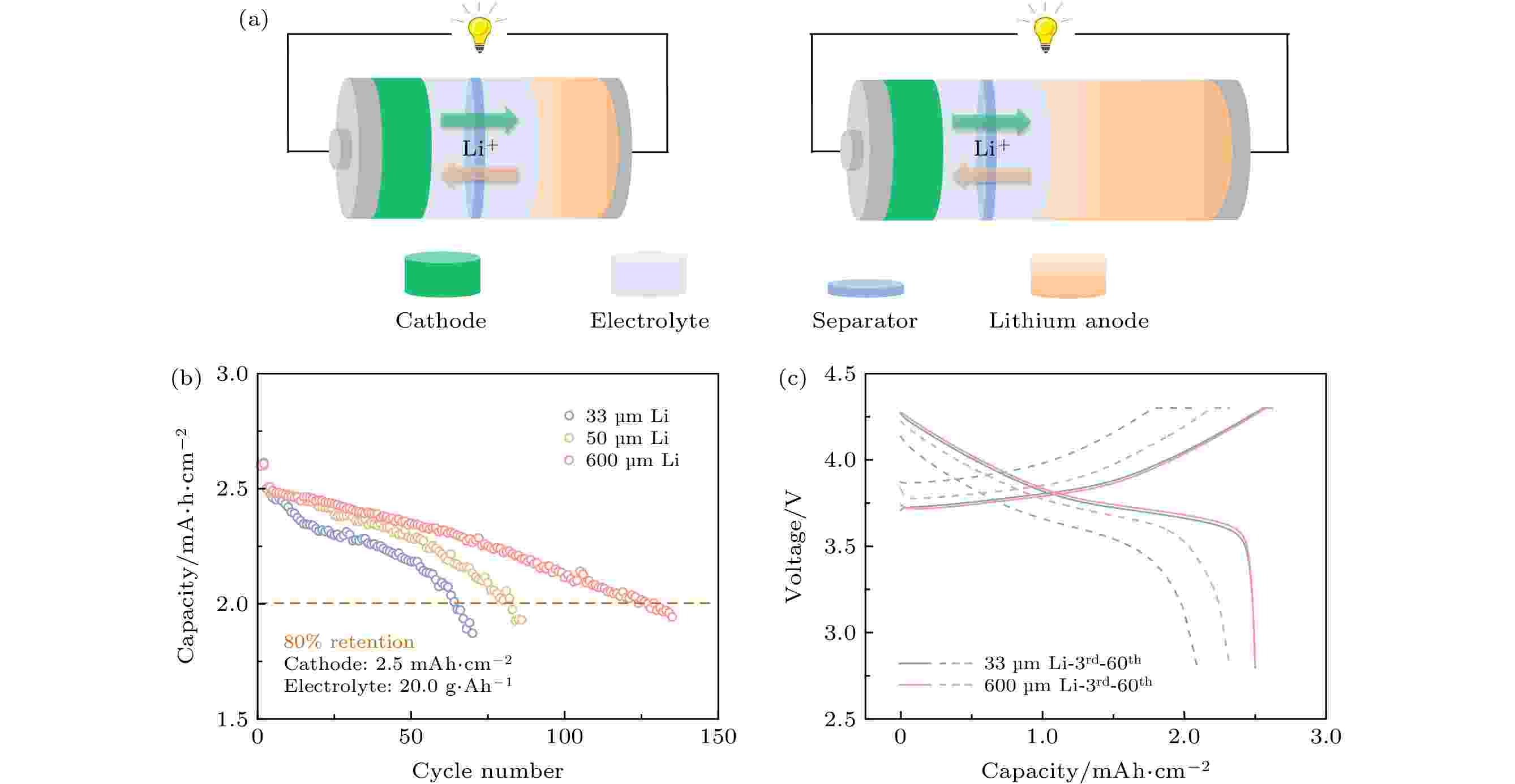
2020, 69 (22): 228501.
doi: 10.7498/aps.69.20200906
Abstract +
Lithium (Li) metal is regarded as one of the most promising anodes in the next-generation high-energy-density rechargeable batteries due to its ultrahigh theoretical specific capacity and low reduction potential. Nevertheless, the unstable solid electrolyte interphase on the surface of Li metal anode and the nonuniform Li deposition seriously hinder its practical applications. Currently, mild conditions are employed in the researches of Li metal anode, which is of great significance for fundamentally understanding the physicochemical features of the anode interface and the mechanisms of Li deposition. However, practical conditions including ultrathin Li metal anode (< 50 μm), low negative/positive electrode areal capacity ratio (< 3.0), and lean electrolyte (< 3.0 g·Ah–1) are the premise to realize high energy density of Li metal batteries (> 350 W·h·kg–1). Herein, the gaps of Li metal anode under mild and practical conditions in terms of the cycling stability and surface morphology are compared and the reasons for the gaps are analyzed carefully. The total quantity of active Li metal decreases and the utilization depth of Li per cycle has been greatly improved under practical conditions. Therefore, the huge volume fluctuation and uneven Li deposition result in ceaseless destruction and regeneration of solid electrolyte interphase, and thus consuming the lean electrolyte and generating a large quantity of dead Li rapidly. Consequently, the polarization voltage of Li metal anode increases rapidly and the cycling stability of Li metal batteries deteriorates evidently under practical conditions. Moreover, the electrochemical reaction of Li metal anode is accelerated while fast charge/discharge process is employed, which further aggravates the stability of Li metal anode. This work reveals the challenges of Li metal anode under practical conditions and present the perspectives for the further researches in practical Li metal anode, which conduces to the solid development of high-energy-density Li metal batteries.
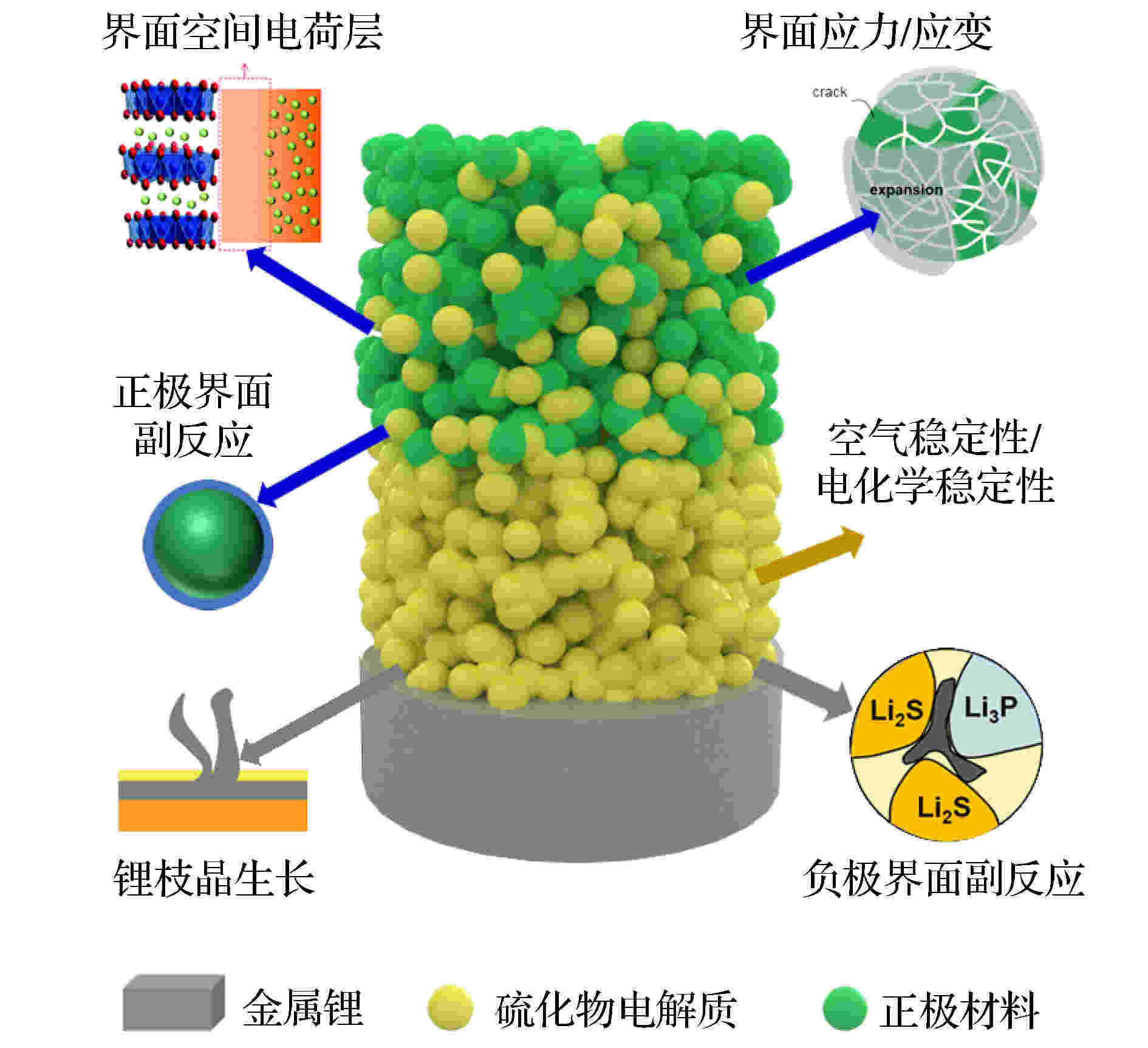
2020, 69 (22): 228803.
doi: 10.7498/aps.69.20201581
Abstract +
The development of high-energy density and high-safety all-solid-state lithium battery (ASSLB) technology has important practical significance for promoting the upgrading of lithium battery technology and the strengthening of technological development in this field. The solid electrolyte is a core component of the ASSLB. The sulfide solid electrolyte is regarded as one of the most promising solid electrolyte candidates for practical application in ASSLBs due to its high ionic conductivity, better mechanical ductility, and good interface contact with the electrode. However, its practical application is severely hampered by the issues of poor air stability and interface problems, including interface side reactions, lithium dendritic growth, and interface mechanical failure. In this review, we first summarize the research methods and degradation mechanisms of the air stability of sulfide solid electrolytes, and the strategies and methods to improve their air stability. Then, the electrochemical stability, interface compatibility and related interfacial modification strategies for sulfide electrolyte/electrode interface are summarized and discussed. Further, the research progress of in-situ characterization technologies for sulfide solid electrolyte/electrode interfaces in recent years is analyzed and summarized. Finally, an outlook on the future research and development of stable interfaces in sulfide solid electrolyte based ASSLBs is highlighted.

2020, 69 (22): 228804.
doi: 10.7498/aps.69.20201191
Abstract +
Solid-state lithium batteries with solid electrolytes have the potential to achieve high energy density and safety, which promise to be used in the electric vehicles and wearable devices. The garnet-type Li7La3Zr2O12 (LLZO) has attracted a great deal of attention due to its high ionic conductivity and good chemical stability to lithium metal. Here in this paper, based on recent progress, this review provides a fundamental understanding of garnet-based electrolytes by evaluating the thermodynamic/kinetics stability and analyzing the Li+ conduction mechanism of ceramics and composite garnet electrolytes. To address the key factors influencing the cyclability and safety of solid-state batteries, the rational design of solid electrolyte/electrode interfaces is discussed in terms of interface matching, charge transfer, strain/stress, thermal stability, etc. Finally, the design guidelines of high-energy-density solid-state batteries are introduced by analyzing the fabrication of electrodes, solid electrolyte and bipolar current collectors. Through the above discussion, this review provides an insight into the physical parameters affecting the performance of garnet-based electrolytes and interfaces, to guide one in carrying on more target-oriented researches of developing high-performance solid-state batteries.

2020, 69 (22): 228805.
doi: 10.7498/aps.69.20201218
Abstract +
The developing of all-solid-state lithium-metal batteries promises to improve safety and energy density. The challenges in the anode|electrolyte interface are crucial and divided into static and dynamic issues in this review. The static issues are mainly shown as the huge resistances appearing in the assembled batteries, while the dynamic issues are reflected in the rapid deterioration of cycling performance. The static issues are mainly due to the poor chemical stability and interfacial contact, while dendrite growth and void formation are contained in the dynamic issues. Solving dynamic issues on the basis of static issues can conduce to the construction of stable all-solid-state lithium-metal batteries.

2020, 69 (22): 228806.
doi: 10.7498/aps.69.20201533
Abstract +
With the increasing demand for storage devices with higher energy output and better safety performance, all-solid-state batteries show their potential to replace the traditional liquid-based Li-ion batteries in the future storage market. Garnet-type Li7La3Zr2O12 is one of the most attractive solid electrolyte materials because of its high ionic conductivity and stability to lithium metal. However, the large interfacial resistance originating from the insufficient solid-solid contact and the penetration of the lithium dendrite due to the inhomogeneous dissolution and deposition of lithium, hinder the all-solid-state batteries from developing. Focusing on the main interfacial problems in garnet-type all-solid battery, this review provides a fundamental understanding of the Li2CO3 issues in Li7La3Zr2O12 solid electrolyte and addresses the key factors influencing Li/ Li7La3Zr2O12/cathode interfacial wettability and the growth of Li dendrite, thus giving the key factors of constructing ideal interfaces. Finally, the possible research direction of garnet-type all-solid-state battery in the future is also prospected, which provides a guidance for developing and using all-solid-state batteries.
REVIEW
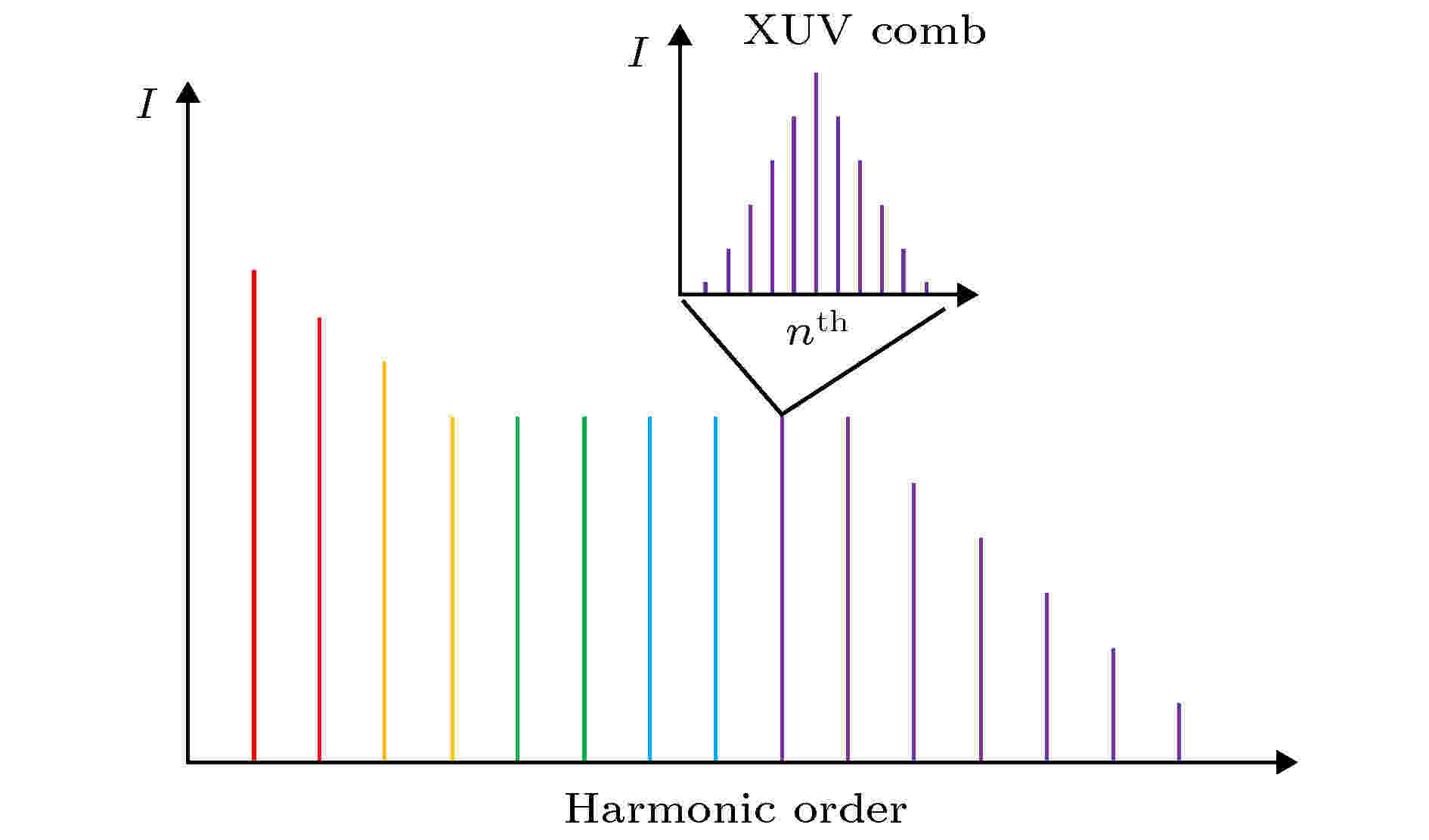
2020, 69 (22): 224203.
doi: 10.7498/aps.69.20200851
Abstract +
Femtosecond optical frequency combs have revolutionized the precision measurement of optical frequency and ultrafast science. Furthermore, the frequency combs expended to extreme ultraviolet (XUV) wavelength could provide an effective tool in attosecond pulse generation, nonlinear optics in ultraviolet, spectroscopy of electronic transitions and experiment of quantum electrodynamics. XUV femtosecond optical frequency combs need to be indirectly obtained by means of high-harmonic generation (HHG) drived by femtosecond pulses with high-repetition rate and extremely high peak power. In this review, firstly, the generation principle and the driving laser source requirements of femtosecond pulses generation in XUV spectral range are introduced. Basing on the requirements of driving laser sources, the several femtosecond laser amplification techniques are described, such as chirped pulse amplification (CPA), optical parametric chirped pulse amplification (OPCPA), double cladding pumped fiber amplifier and femtosecond enhancement cavity (fsEC). Meanwhile, the relative merits and applicability of which for XUV femtosecond optical frequency combs generation are compared. Secondly, in the HHG process, the XUV is generated collinearly or non-collinearly with the optical driving field. For the collinear generation process, one of the fundamental challenges is the design of a high-efficiency XUV output coupler. Here, three methods for out-coupling the XUV are expounded. Also, the theory of non-collinear XUV generation is mentioned. Finally, some typical research progress of XUV femtosecond optical frequency combs generation based on fsEC, OPCPA and femtosecond oscillators are reviewed respectively, as well as the current problems that need to be optimized are summarized.
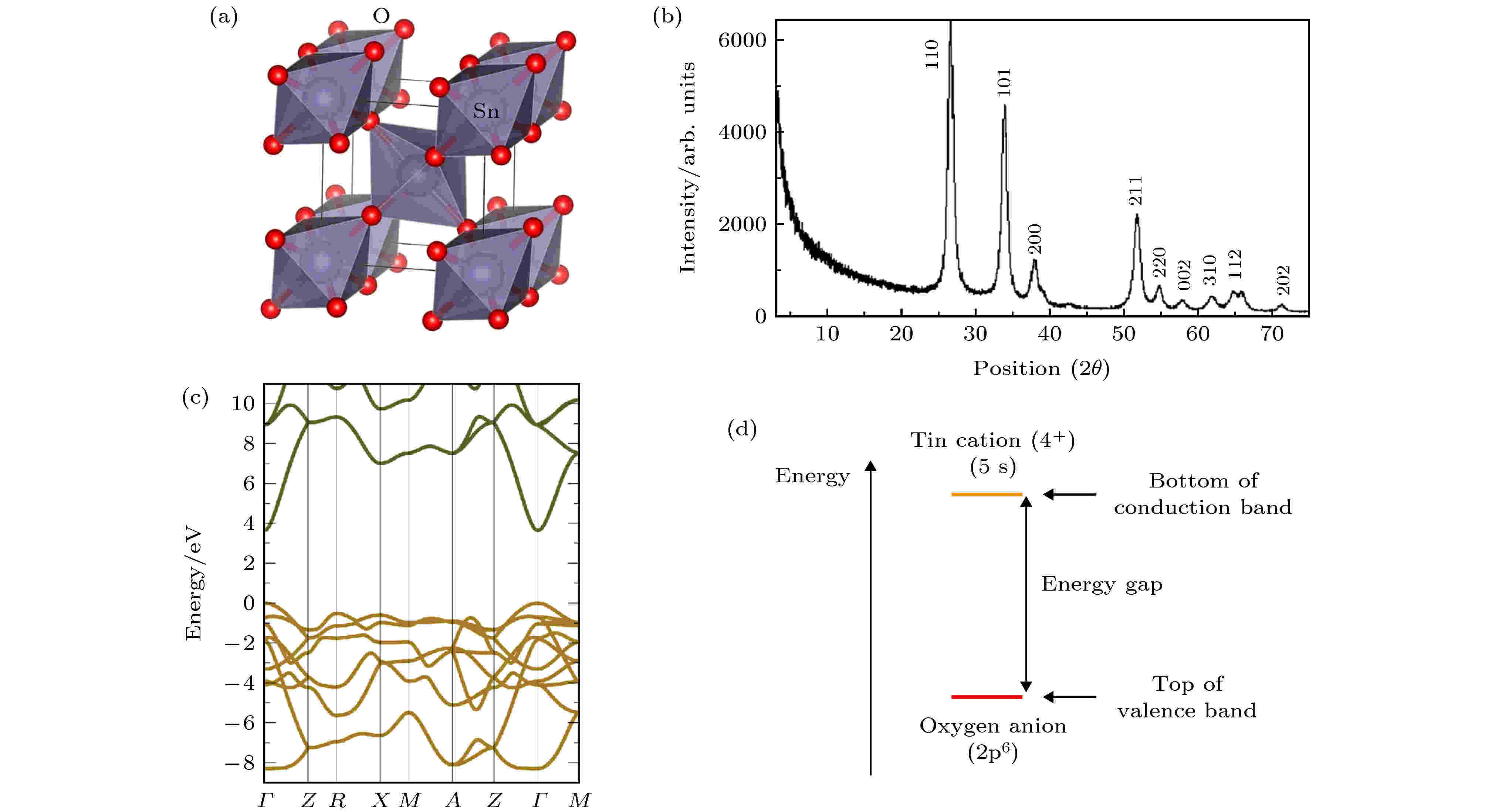
EDITOR'S SUGGESTION
Research progress of tin oxide-based thin films and thin-film transistors prepared by sol-gel method
2020, 69 (22): 228102.
doi: 10.7498/aps.69.20200653
Abstract +
Transparent conductive oxide (TCO) films and transparent oxide semiconductor (TOS) films have been widely adopted in solar cells, flat panel displays, smart windows, and transparent flexible electronic devices due to their advantages of high transparency and good conductivity and so on. Most of TCO and TOS films are mainly derived from indium oxide, zinc oxide and tin oxide. Among these materials, the In element is toxic, rare and expensive for indium oxide film, which will cause environmental pollution; zinc oxide film is sensitive to acid or alkali etchants, resulting in a poor formation of film patterning; tin oxide film is not only non-toxic, eco-friendly, and cheap but also has good electrical properties and strong chemical stability. Thus, tin oxide has a great potential for developing the TCO and TOS films. At present, the film is prepared mainly by the vacuum deposition technique. The drawbacks of this technique are complex and expensive equipment system, high energy consumption, complicated process and high-cost production. However, compared with the vacuum deposition technique, the sol-gel method has attracted extensive attention because of its virtues such as simple process and low cost. In this paper, we review the development status and trend of TCO and TOS films. First, the structural characteristics, conductive mechanism, element doping theory and carrier scattering mechanism of tin oxide thin films are introduced. Then the principle of sol-gel method and correlative film fabrication techniques are illustrated. Subsequently, the application and development of tin oxide-based thin films prepared by sol-gel method in n-type transparent conductive films, thin-film transistors and p-type semiconductor films in recent years are described. Finally, current problems and future research directions are also pointed out.
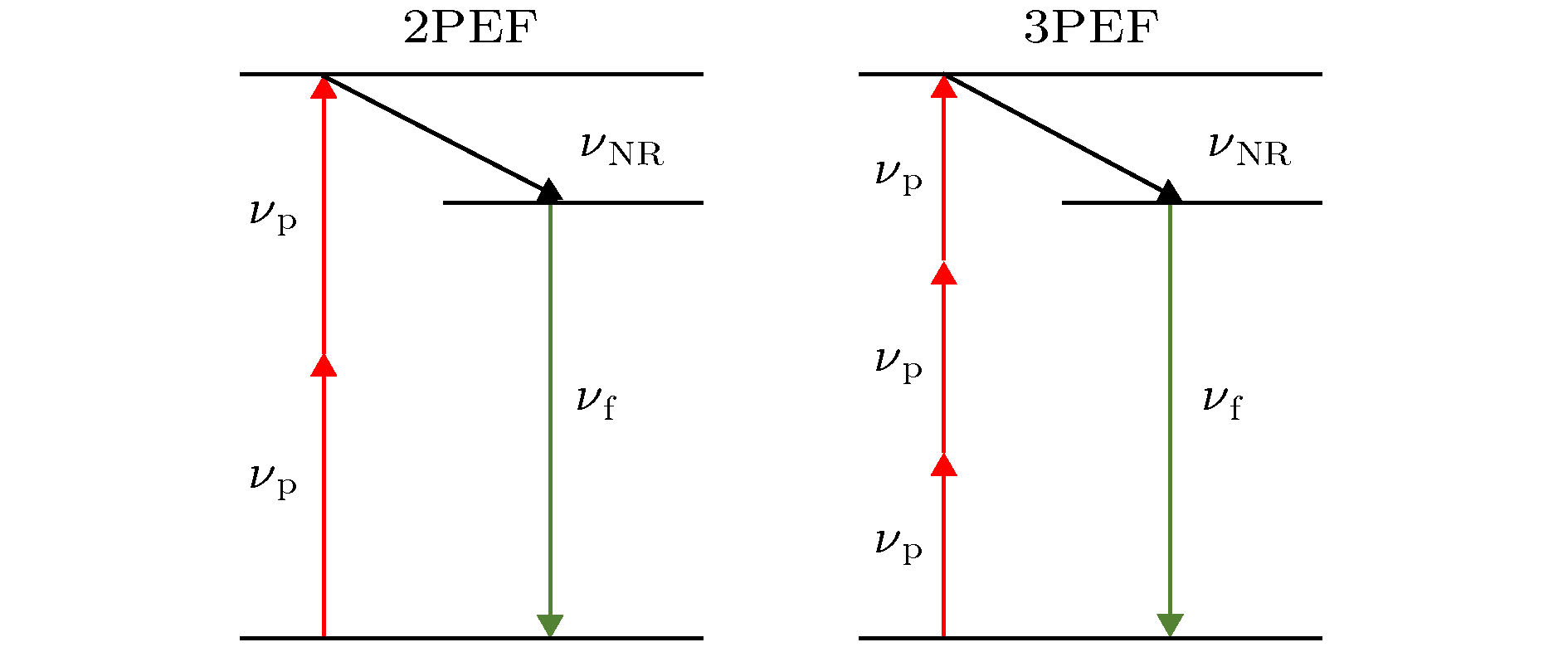
EDITOR'S SUGGESTION
2020, 69 (22): 228702.
doi: 10.7498/aps.69.20201039
Abstract +
In contrast to single photon excitation fluorescence imaging, laser scanning confocal imaging, and wide-field imaging, the multi-photon imaging has advantages of minimal invasion and deeper penetration by using near-infrared (NIR) laser source. Moreover, it can carry out three-dimensional high-spatial-resolution imaging of biological tissues due to its natural optical tomography capability. Since its advent, multi-photon imaging has become a powerful tool in biomedicine and achieved a series of significant discoveries in cancer pathology, neurological diseases and brain functional imaging. In the past decade, as a major form of multi-photon imaging techonoogy, two-photon excited fluorescence microscopy imaging has a great potential in biomedical applications. In order to satisfy the practical biomedical applications, multi-photon imaging technologies have made significant breakthroughs in improving the deficiencies of traditional 2PEF in multi-color imaging, functional imaging, live imaging and imaging depth, such as multicolor two-photon excitation fluorescence microscopy, two-photon fluorescence lifetime imaging microscopy, two-photon fiber endoscopic imaging, and three-photon microscopy imaging technology. For example, multicolor two-photon excitation fluorescence microscopy is demonstrated to achieve simultaneous imaging of multiple fluorophores with multiple wavelenth excitation lasers or continuous spectrum. In addition, the two-photon fluorescence lifetime microscopic imaging provides a method to achieve high-resolution three-dimensional imaging of biological tissue with multi-dimensional information including fluorescence intensity and lifetime. In addition, two-photon optical fiber endoscopic imaging with small system size and mimal invasion is developed and used to image the tissue inside the deep organ. Finally, two-photon excitation fluorescence microscopy technique still has relatively strong scattering for brain functional imaging in vivo. Therefore, the imaging depth is limited by the signal-to-background ratio. Three-photon microscopic imaging technique can achieve higher imaging depth and a desired signal-to-noise ratio by extending the wavelength from 1600 nm to 1820 nm because the attenuation of the excitation light in this wavelenth range is much smaller. In this article, we briefly introduce the principles and applications of these multi-photon imaging technologies, and finally provide our view for their future development.
GENERAL

2020, 69 (22): 220301.
doi: 10.7498/aps.69.20200838
Abstract +
Utilizing optical nonlinearity for generating the entanglement is still a most widely used approach due to its quality and simplicity. Here in this paper, we propose a theoretical scheme to generate bipartite and tripartite entanglement in a cavity quantum electrodynamics (QED) system with one Yttrium iron garnet (YIG) sphere by using a squeezed drive. In such a system, the parametric down-conversion process is used to generate the nonlinearity and further increase the coupling between cavity and YIG. Thus, the enhanced coupling between the microwave cavity photons and the ferromagnetic resonance (FMR) mode/magnetostatic (MS) mode results in bipartite entanglements. By using the mean field theory, we show that the bipartite entanglements strongly depend on the detuning of the cavity and magnon mode. When the driving field is tuned to be resonant with the FMR mode, but the MS mode is far off-resonant, the entanglement between photons and the FMR mode reaches its maximum. However, when the driving field is tuned to be resonant with the MS mode, but the FMR mode is detuned very well, the entanglement between photons and the MS mode reaches its maximum. We show that the dissipation of the FMR/MS mode affects the entanglement greatly, and the bipartite entanglement decreases as the dissipation rate of the FMR/MS mode increases. Under the steady-state approximation, we also show that the tripartite entanglement can be generated, and the minimum residual contangle increases with the enhancement of the nonlinear gain coefficient. With the nonlinearity induced by the parametric down conversion process, the interaction between the driving field and the magnetic-cavity QED system leads to the tripartite entanglement involving the cavity photons, FMR mode and the MS mode. Likewise, we show that the tripartite entanglement also strongly depends on the dissipation rate of MS mode, and the minimum residual contangle increases as the dissipation rate of the MS mode decreases. We also show that the squeezed field induced tripartite entanglement is insensitive to the temperature and has good robustness. Our results suggest that the magnetic-cavity QED system could provide a promising platform for studying the macroscopic quantum phenomena, and the squeezing field opens a new method of generating the entanglement.
2020, 69 (22): 220401.
doi: 10.7498/aps.69.20200488
Abstract +
The Herglotz variational problem is also known as Herglotz generalized variational principle whose action functional is defined by differential equation. Unlike the classical variational principle, the Herglotz variational principle gives a variational description of a holonomic non-conservative system. The Herglotz variational principle can describe not only all physical processes that can be described by the classical variational principlen, but also the problems that the classical variational principle is not applicable for. If the Lagrangian or Hamiltonian does not depend on the action functional, the Herglotz variational principle reduces to the classical integral variational principle. In this work, in order to describe the dynamical behavior of complex non-conservative system more accurately, we extend the Herglotz variational principle to the fractional order model, and study the adiabatic invariant for fractional order non-conservative Lagrangian system. Firstly, based on the Herglotz variational problem, the differential variational principle of Herglotz type and the differential equations of motion of the fractional non-conservative Lagrangian system are derived. Secondly, according to the relationship between the isochronal variation and the nonisochronal variation, the transformation of invariance condition of Herglotz differential variational principle is established and the exact invariants of the system are derived. Thirdly, the effects of small perturbations on fractional non-conservative Lagrangian systems are studied, the conditions for the existence of adiabatic invariants for the Lagrangian systems of Herglotz type based on Caputo derivatives are established, and the adiabatic invariants of Herglotz type are obtained. In addition, the exact invariant and adiabatic invariant of fractional non-conservative Hamiltonian system can be obtained by Legendre transformation. When $ \alpha \to 1$ , the Herglotz differential variational principle for fractional non-conservative Lagrangian system degrades into classical Herglotz differential variational principle, and the corresponding exact invariants and adiabatic invariants also degenerate into the classical exact invariants and adiabatic invariants of Herglotz type. At the end of the paper, the fractional order damped oscillator of Herglotz type is discussed as an example to demonstrate the results.
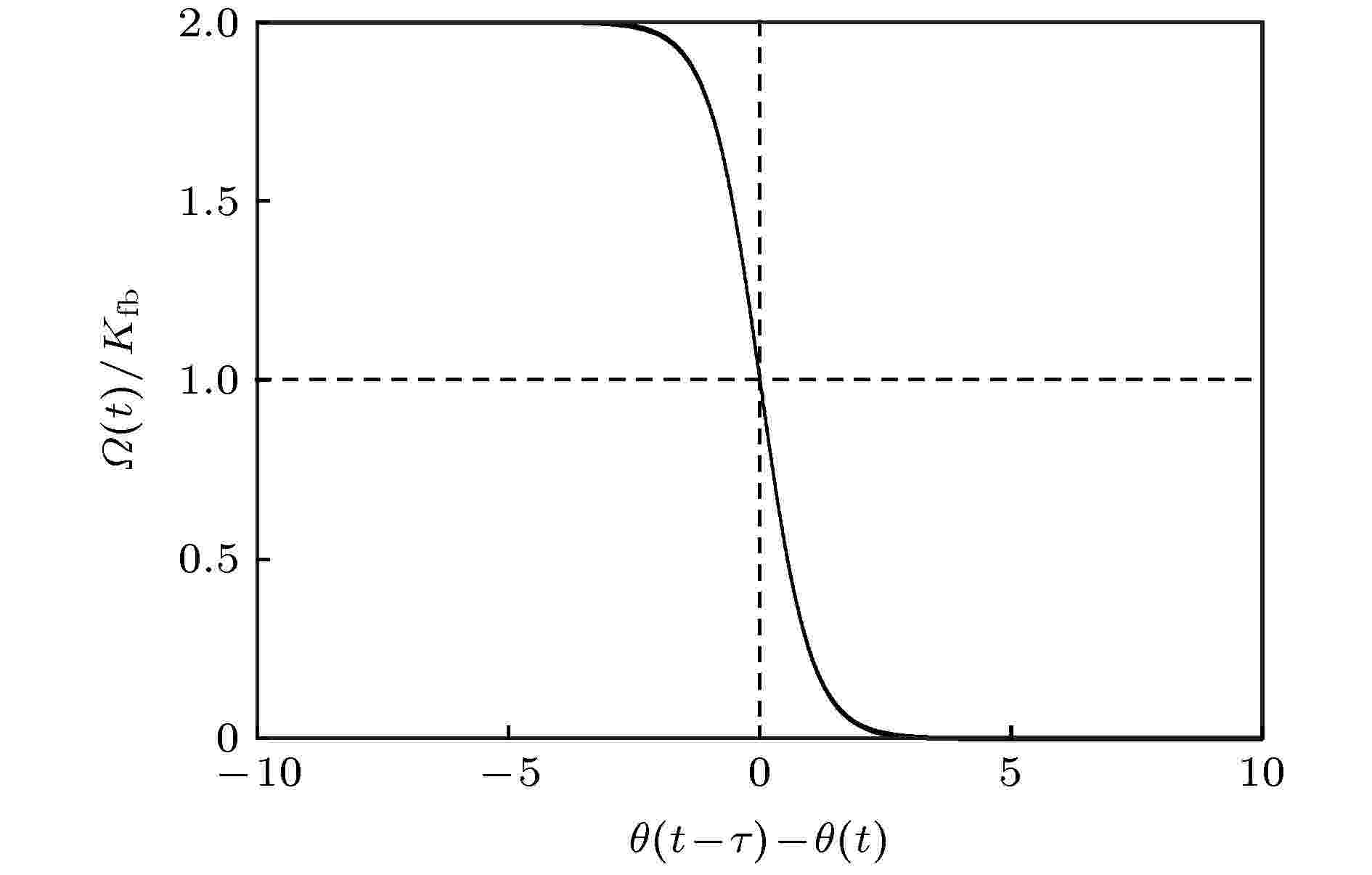
2020, 69 (22): 220501.
doi: 10.7498/aps.69.20200505
Abstract +
Considering the periodic boundary conditions, a new prescription for separating binary mixtures of chiral active particles by time-delayed feedback in a two-dimensional square box is proposed. We investigate the angular velocity, the feedback intensity, the delayed time, the rotational diffusion coefficient, the self-propelled speed and the packing fraction as functions of the effective diffusion coefficient and the separation coefficient numerically by the extensive Brownian dynamics simulations. It is found that mixed chiral active particles be separated without time-delayed feedback, but the dynamics of chiral active particles are different obviously and mixed chiral particles can be separated when the time-delayed feedback is introduced. The particle configuration (mixing or demixing) is determined by the dominant factor of particles’ diffusion. We can control the extent to which the diffusion of counterclockwise (CCW) active particles is affected by the diffusion of clockwise (CW) active particles adjusting the strength and the delayed time of the feedback. The response to the feedback for different chiral particles show different behaviors under different system parameters. When the feedback intensity is strong and the delayed time is long enough, the angular velocity of counterclockwise particles is accelerated and the diffusion of which is dominated by the interactions between particles completely. However, the angular speed of clockwise particles change little and the diffusion of which is determined by its parameters and particle interactions jointly. In this case, the counterclockwise particles aggregate to form clusters easily, and the clockwise particles diffuse quickly, therefore, the mixed chirality active particles are separated. When the feedback intensity is weak and the delayed time is short, the chirality difference between different chiral particles modulated by the feedback is smaller than the former case. The diffusions of counterclockwise particles and clockwise particles are both determined by their parameters and particle interactions, and the particles are mixed. Our findings provide novel strategies for the experimental pursuit of separating mixed chiral active particles and could be applied practically in many biological circle swimmers, such as autochemotactic particles, the bacteria in an external light field and sperm cells with vortex motion.
ELECTROMAGNETISM, OPTICS, ACOUSTICS, HEAT TRANSFER, CLASSICAL MECHANICS, AND FLUID DYNAMICS

2020, 69 (22): 224201.
doi: 10.7498/aps.69.20201488
Abstract +
The performances of metamaterial absorbers can be affected by the incidence angle of electromagnetic wave. It is difficult to design the incidence angle-insensitive metamaterial absorbers. In this paper, we propose a metamaterial absorber with wide-angle incidence based on the equivalent medium theory. The absorber unit consists of a double-sided split resonant ring placed vertically on the ground. The resistors and capacitors are loaded at the opening of the resonant ring. The resistor is used to adjust the equivalent electromagnetic parameters of the metamaterial, and the capacitor is used to control the resonant frequency of the metamaterial and miniaturize the unit. When the transverse electric (TE) plane wave impinges on the surface of the absorber, R = 4000 Ohm and C = 1.5 pF, the proposed absorber can achieve an absorptivity greater than 90% at 1.59 GHz up to an incidence angle reaching 70°. Besides, the absorber can achieve an 85% absorptivity under an incidence angle of 75°. when the transverse magnetic (TM) plane wave impinges on the surface of the absorbers, R = 1200 Ω and C = 1.5 pF, the proposed absorber can achieve an absorptivity of greater than 90% at 1.59 GHz up to a 70°incidence angle. Besides, the absorber can also achieve an absorptivity of 85% up to 75°. The results show that the measurement results are basically consistent with the simulation results. In addition, when the capacitance is changed while the other parameters are fixed, the metamaterial absorber proposed in this paper still has the same wide-angle absorbing performance at the new resonant frequency. In other words, the proposed absorber has broadband operating characteristics. A frequency-tunable metamaterial absorber with wide-angle incidence can be designed based on the aforementioned results. The results in this paper provide a method of tuning capacitance. The opening is set at the other end of the split ring, and the same fixed-value resistor and variable capacitor are loaded on the left opening, and the corresponding DC bias feeder is designed. One end of the DC bias line is directly connected to the ground, and the other end needs to be separately connected to the other DC bias feeder of each unit to realize the control of the variable capacitors of each unit.
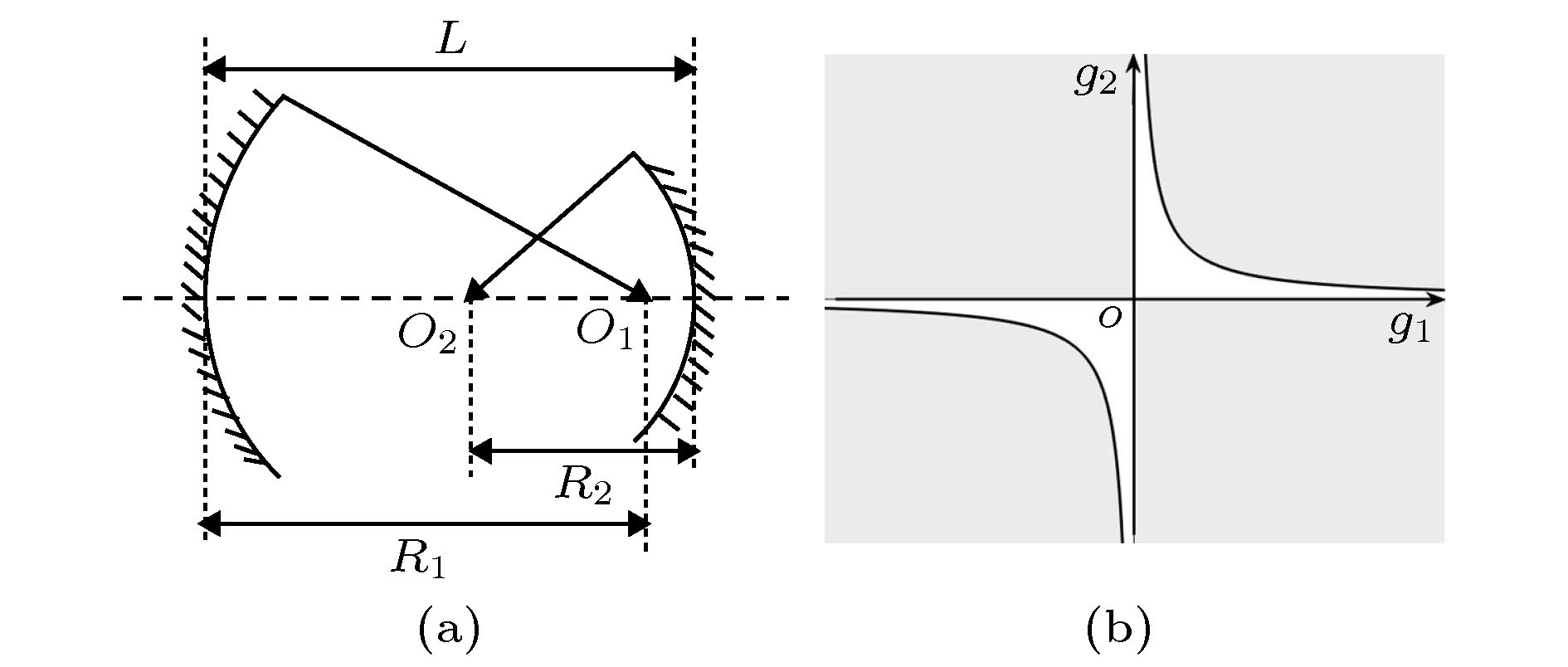
EDITOR'S SUGGESTION
2020, 69 (22): 224202.
doi: 10.7498/aps.69.20200814
Abstract +
Optical cavity is a fundamental device of modern optics and has a wide range of applications in the fields of laser generation, nonlinear optical conversion, and optical sensors. A major aspect of the properties of optical cavity is the stability analysis. According to different geometric losses, these optical cavities can be divided into three types: stable cavity, critical cavity, and unstable cavity. The determination of the stability of the optical cavity is the basic problem of a classic system, but the research and analysis of this point have been much insufficient in the past. In this paper, by extending the definition domain of the inverse trigonometric function, the propagation matrices of the symmetric confocal cavity and the asymmetric confocal cavity are solved. The sudden change of stability with the change of geometric parameters is explained by algebraic analysis and optical ray topology.The mathematical analysis shows that the stability catastrophe of confocal cavity is due to the sudden change in the value of inverse cosine function at the critical point of the traditional domain of definition. From the perspective of geometric topology, we define the topological charge of the cavities according to the geometric propagation path of light in the cavity. Only the cavities with zero topological charge are found to be stable, and the change of topological charge is quantized, which explains the sudden change of confocal cavity stability. Finally, we build a coupled stable cavity consisting of two unstable cavities with the same parameters. The quality factors of the coupled stable cavity and the unstable cavity are analyzed by the finite difference time domain method, which further verifies the origin of the sudden change in the stability of the confocal cavity. We propose that the coupled unstable dual cavities with opposite topological charges are able to be stable, and we also find that there are new modes in the coupled cavities which are not found in the corresponding single cavity. These findings suggest a new method for controlling microcavity loss, which has a certain value for studying the new micro-nano lasers, on-chip nonlinear devices, and non-Hermitian optical sensors.

2020, 69 (22): 224701.
doi: 10.7498/aps.69.20200491
Abstract +
Heat transfer in a micro-scale system has less thermal inertia and faster thermal response, which has unique advantages in controlling heat transfer. Interface thermal resistance is an important physical quantity that reflects the heat transfer performance of the interface on a micro-scale. In this paper, the interface thermal resistance os static fluid and flowing fluid in nanochannel, which are different in the wall temperature and wettability, are studied by the molecular dynamics method. In the static fluid, the results show that the wall wettability has a significant influence on the interface thermal resistance, and the stronger the wall wettability, the smaller the values of interface thermal resistance is. For the walls with different temperatures, it can be observed that the interface thermal resistance on high temperature wall is higher than that on low temperature, when the wall wettability is weaker. On the contrary, when the wall wettability is stronger, the effect of wall temperatures on the interface thermal resistance is negligible. An external force applied to the fluid domain makes the fluid flow. In the flowing fluid, the results show that the variation of wall wettability and external force can lead to the slip to different degrees at the interface, and the slip-induced frictional viscous heat is generated at the solid-liquid interface, and thus increasing the fluid temperature and the heat flux of the system. The effect of external force on the thermal resistance is limited by the wall wettability. When the wall wettability is weaker, the increase of the external force will make the interface slip more easily and the thermal resistance decrease. With the stronger wall wettability, it is difficult to make the interface slip obviously with the increase of external force, and the influence of external force on interface thermal resistance decreases. The heat transfer performance at the solid-liquid interface is related to the number of fluid molecules adsorbed on the wall surface. The results show that in the static fluid, the increase of wall wettability will make more fluid molecules adsorbed on the wall, and the arrangement becomes more and more regular, which causes the interface thermal resistance to decrease and is beneficial to the interface heat transfer. In the flowing fluid, the change of external force has less influence on the number of adsorbed molecules, and the wall wettability is the main factor affecting the adsorption of fluid molecules on the wall.
CONDENSED MATTER: STRUCTURAL, MECHANICAL, AND THERMAL PROPERTIES

EDITOR'S SUGGESTION
2020, 69 (22): 226101.
doi: 10.7498/aps.69.20200832
Abstract +
High-pressure and high-temperature(high-P-T) in-situ neutron diffraction detection method is a field of growing interest, in particular, for its numerous applications in the field of condensed matter physics, crystal chemistry, geophysics, materials science and engineering. In this work, we design and optimize a set of assembly for high-P-T in-situ neutron diffraction experiment in neutron source of China by using Paris-Edinburgh(PE)-type press. The high-P-T experiment is carried out with a high-pressure neutron diffraction spectrometer (Phoenix) of China Mianyang Research Reactor (CMRR). A 1500 KN uniaxial loading system and a 1500 W constant current source provides extreme conditions of high-P-T for PE press. The toroidal anvil we use is made of tungsten carbide. We use two types of gaskets: one is machined from the null-scattering TiZr alloy and the other is made from the thermal insulation ceramic material of ZrO2. High-temperature furnace is formed by graphite. First, a simplified simulation analyses of the pressure change rates in different areas of the entire assembly are carried out, and it is concluded that the gasket I, II, III areas are designed with a gradient decreasing method. The compression ratio of the sample chamber is significantly improved. Then when the gasket reaches the same compression ratio, the cell pressure will be higher than the pressure before optimization. After that, we conduct experimental verification on the optimized design. Through a series of optimization experiments for assembly on the rheological control of gasket, the improvement of thermal insulation performance and the maximization of effective sample volume under high-P-T, the key technical indicators and design scheme of the high-P-T in-situ neutron diffraction platform are verified. The temperature and pressure in the sample cavity are calibrated by using the MgO's high-P-T in-situ neutron diffraction spectrum and equation of state. The in-situ neutron diffraction sample cavity environment of the designed platform can reach the conditions of 11.4 GPa and 1773 K. The successful development of this assembly greatly improves the experimental conditions of CMRR high-P-T neutron diffraction platform. At the same time, it has important reference significance for further improving the high-P-T loading conditions of the PE-type press and expanding the application scope of the PE-type press.
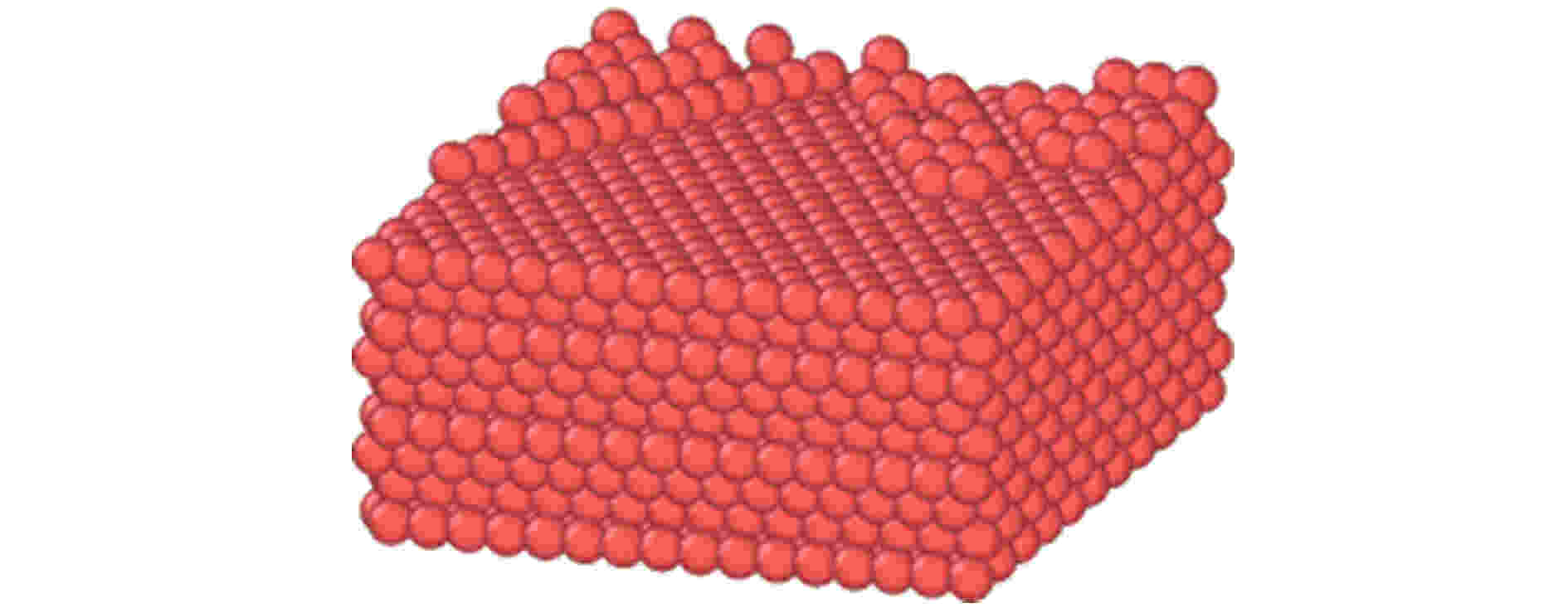
2020, 69 (22): 226102.
doi: 10.7498/aps.69.20200781
Abstract +
Chemical vapor deposition (CVD) is an essential method of depositing and fabricating large-area and high-quality graphene. In this work, molecular dynamics (MD) simulation technology is adopted to simulate the fabrication of graphene on the copper (111) crystal surface by chemical vapor deposition method. In order to eliminate the adverse effects of traditional MD method, an adapted potential system between carbon and copper atoms is introduced into the modeling of deposition and growth simulation of graphene. The results reveal the microscale growth mechanism of the graphene depositing on Cu(111) crystal surfaces, and the influence of temperature and carbon deposition rate (CDR) on the quality of graphene. The simulation results indicate that the deposition and growth of graphene consists of two stages. The first stage is to form binary carbons, trinary carbons and carbon chains. The second stage is to form carbon rings and the defects healing. The research results also reveal that high temperature can provide the carbon atoms with sufficient energy, which can help the carbon atoms to skip the energetic barrier between the two stages, and then achieve the deposition and growth of graphene. Moreover, the influence of temperature and carbon deposition rate are investigated in detail. The temperature mainly affects the defects and the flatness of graphene. The defects of graphene are the least and the surface can become the flattest at a deposition temperature of 1300 K. Higher temperature can cause the carbon atoms to irregularly move, and lower temperature can suppress the catalysis of the copper substrate. Both the higher and lower temperature can degrade the quality of the graphene surface. The CDR can influence the defects of graphene in growth. The lower value of CDR can lead to local growth on the graphene surface because of the lower nucleation density while the higher CDR is also able to cause the defects to form because of the uneven free energy distribution on the copper surface that has thermal fluctuation. It is shown that graphene can present the flattest surface when the value of CDR is set to be 5 ps–1. According to the simulation process of deposition, it validates that the bi-layer and multi-layer graphene may grow based on the deposition of original single layer of graphene. As to the deposition and growth practice, it is suggested that the temperature 1300K should be suitable for the graphene CVD process of Cu(111) surface. The results in this work can provide a reference for understanding and implementing the fabrication of graphene on the Cu substrate by CVD methods.

2020, 69 (22): 226103.
doi: 10.7498/aps.69.20200553
Abstract +
CdZnTe recently emerged as a leading semiconductor crystal for fabricating room-temperature x- and gamma-ray imaging detectors, due to its excellent energy resolution and sensitivity. However, its wide deployment is hampered by the low availability of high-quality CdZnTe crystals. As-grown CdZnTe crystals generally encounter the problems arising from the impurities and defects, especially deep level defects. The presence of impurities and defects leads to severe charge trapping, which significantly affects detector performance. Especially for high counting rate imaging detector used in medical imaging and tomography, the accumulation of space charge at deep levels significantly deforms the electric field distribution and subsequently reduces the charge collection efficiency. Therefore, a considerable interest is focused on the investigation of the space charge accumulation effect in CdZnTe crystal, which is the key factor to improve the performance of high counting rate imaging detector. Thus, the goal of this work is to investigate the effects of deep level defects on space charge distribution and internal electric field in CdZnTe detector. In order to reveal the major problem therein, Silvaco TCAD technique is used to simulate the space charge and electric field distribution profile in CdZnTe detector with considering the typical deep level defects $ \rm Te_{Cd}^{++} $ in CdZnTe crystals with activation energy of Ev + 0.86 eV and concentration of 1 × 1012 cm–3 at room temperature. The simulation results demonstrate that the Au/ CdZnTe /Au energy band tilts intensively with the increase of applied bias, which makes the deep level ionization fraction increase. The space charge concentration also increases in the crystal. Meanwhile, the dead layer of electric field distribution decreases, which is of benefit to the carrier collection of CdZnTe detector. In addition, under the premiseof the high resistivity of CdZnTe crystal, the reduction of deep level defect concentration located at Ev + 0.86 eV can narrow the internal dead layer moderately. The deep level defect located at Ev + 0.8 eV can also reduce the space charge concentration near the cathode, which flattens the electric field distribution with narrower dead layer, thus significantly improving the carrier collection efficiency of CdZnTe detector. These simulation results will provide meaningful theoretical guidance for further optimizing the CdZnTe crystal growth, device design and fabrication.

2020, 69 (22): 226301.
doi: 10.7498/aps.69.20200839
Abstract +
The controlling of magnetism of perovskite oxides is scientifically interesting and technically important for numerous functionalities in spintronic devices and next-generation magnetic memories. The experimenally prepared superlattices often contain strain, polarization, oxygen vacancy and other factors, which can affect their magnetic properties. The magnetism of superlattice materials, controlled by using both epitaxial strain and ferroelectric polarization, is not only close to the real state of the material, but also can induce rich physical properties. In this work, we demonstrate a strong magnetoelectric coupling that appears in the LaMnO3/ BaTiO3 superlattice. First-principles calculations reveal that the reversible transitions among ferromagnetism, ferrimagnetism and anti-ferromagnetism are achieved by precisely controlling the magnitude and spin-direction of the magnetic moments of the Mn ions. A maximal change can be achieved to be 100.1% of the net magnetization by switching the ferroelectric polarization, which is much higher than the previous value 93.9%. The half-metallicity is demonstrated in the MnO2 layer, and accompanied by the spin polarization of the superlattice varying from 100% to 0. In addition, we realize the coexistence of ferroelectric polarization and metallicity, i.e. “ferroelectric metal”. Neither of the strong covalent Mn—O bond and La—O bond acts as an obstacle that prevents the ferroelectric polarization from penetrating the LMO layer. The Jahn-Teller effect, the tilt and rotation of oxygen octahedron, and the charge transfer of the superlattice are systemically analyzed. The variation of strain and re-orientation of polarization lead the electrons to transfer between the eg and t2g orbitals of Mn, which determines the magnetism of our system. Our purpose-designed LMO/BTO superlattice with robust intrinsic magnetoelectric coupling is a particularly interesting model system that can provide guidance for developing the spintronics for future applications.
CONDENSED MATTER: ELECTRONIC STRUCTURE, ELECTRICAL, MAGNETIC, AND OPTICAL PROPERTIES
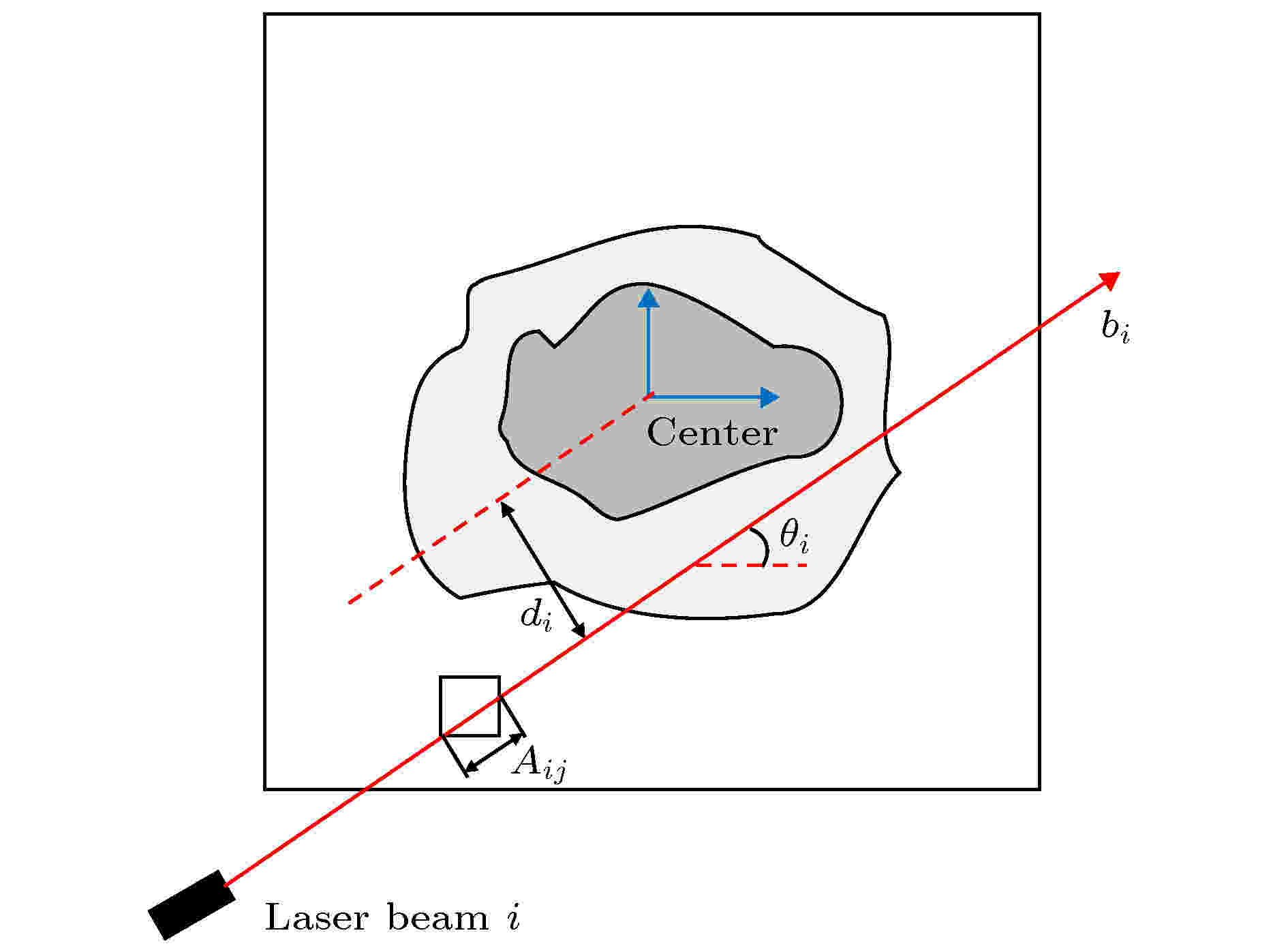
2020, 69 (22): 227801.
doi: 10.7498/aps.69.20201144
Abstract +
Beam arrangement with limited projections is a critical part of research on tunable diode laser absorption tomography reconstruction for combustion diagnosis. Based on the efforts to regularize this rank-deficient and ill-posed problem with Tikhonov regularization, a novel approach to using the regularization parameter matrix is developed for designing optical component layout and predicting the reconstruction accuracy. Objective function of beam arrangement is established by the rigorous mathematical derivation, and genetic algorithm is adopted to realize the optimization of function to overcome the difficulty associated with the multimodal nature of the problem. Nonuniform distribution properties of matrix elements in physical space relate to location and alignment of the laser/detector pairs, and form a basis for adjusting the weight between measurement and regularization to improve the reconstruction performance. A mathematical model of double Gauss distributions is established in a 10 × 10 element discrete tomography domain, and typically 20 measurement beams scanning the H2O transition at 7185.6 cm–1 are available to probe the domain of interest. The systematic comparison between optimized beam array here and four existing beam arrangements in the literature is analyzed to validate the method. The reconstruction with Tikhonov regularization parameter matrix shows obvious advantages of reducing errors especially under the condition of fewer projections. The validation of reconstruction performance of the optimized beam array is also examined by simulating the laser absorption measurement which is carried out on phantoms generated using a simulation of external flow field of an air-gasoline pulsed detonation engine. The result shows that the optimized beam array consistently outperforms other arrangements reported in complicated fluid field. A demonstration reconstruction experiment is performed on the distribution from small gas burners. Both locations and amplitudes are in good agreement with those in the actual case. This proposed design method will be valuable in broadening the scope of applications of tunable diode laser absorption tomography reconstruction for engine diagnosis and combustion efficiency improvement.
INTERDISCIPLINARY PHYSICS AND RELATED AREAS OF SCIENCE AND TECHNOLOGY

2020, 69 (22): 228101.
doi: 10.7498/aps.69.20200891
Abstract +
Terahertz (THz) has the characteristics of non ionization, penetration, water absorption, high resolution, etc. It has shown an important application prospect in many fields, such as non-destructive testing, imaging and communication. However, THz is in the transition frequency band ranges from macro-electronics to micro-photonics, so, it belongs to the interdisciplinary field, forming the “terahertz gap” in electromagnetic wave. In recent years, with the continuous development and improvement of THz radiation source and detection technology, the THz modulation technology has gradually aroused the interest of researchers. Metamaterials with many properties that natural materials do not possess provide a common way to control THz. The two-dimensional structure of a metamaterial is called a metasurface. The coding metasurface encodes the phase digitally so that the electromagnetic wave can be regulated. It is proposed that it is first in the microwave band and then extended to the THz band. In the microwave band, the number, direction and amplitude of the far-field beams can be changed dynamically by programming, which is connected with the integrated circuit such as FPGA by using diodes, but due to the limitation of diode size and micro-nano manufacturing technology, the programmable metasurface in microwave band cannot be well used in THz band. In order to improve the flexibility of THz coding metasurface, in this paper we choose the phase change material vanadium dioxide (VO2) to active modulation coding metasurface. In this paper, we analyze the VO2’s insulating state before the phase transformation and metallic state after the phase transformation. Then designing an active control 1 bit coding metasurface by using the influence of the two states on the amplitude and phase of the unit structure, which is composed of VO2, polyimide and aluminum, can not only realize the basic function of coding metasurface adjusting the electromagnetic wave beams, but alsoimplement the switching of two kinds of far-field beams at 1.1 THz for the same coding sequence by thermal stimulated VO2. The coding metasurface also realizes the switching between two near-field focal points at 1.1 THz for the same coding sequence. Based on the effect of VO2 on the phase, this coding metasurface provides a new way to adjust and control the THz wave flexibly, and will have a great application prospect in THz transmission, imaging and communication.

2020, 69 (22): 228103.
doi: 10.7498/aps.69.20200810
Abstract +
Gallium oxide (Ga2O3) thin films have great potential applications in UV detectors and power devices; the preparation of high-quality films still needs further studying. In this paper, the Ga2O3 epitaxial thin films are grown by physical sputtering on the seed layer under different power conditions, and the growth mechanism of Ga2O3 epitaxial films are investigated. The introduction of a seed layer provides an artificial nucleation point, which effectively alleviates the lattice mismatch between sapphire substrate and Ga2O3 epitaxial films. thereby improving the quality of the epitaxial layer significantly. Through experiments, it is found that as the power of the epitaxial layer film increases during the growth, the crystal grains agglomerate to a certain size and crack. This physical phenomenon is attributed to the fact that the energy carried by sputtered particles is too large under the condition of high power, which leads the number of particle collisions to increase when they diffuse on the growing crystal surface. The X-ray diffraction, atomic force microscope, field emission scanning electron microscope, ultraviolet spectrophotometer, and photo-luminescence spectrum are used to characterize the structure, morphology, and optical properties of the deposited Ga2O3 thin film. The results show that the epitaxial films are β-Ga2O3 with $ \left( {\bar 2\;0\;1} \right)$ orientation, and the thickness values of thin films are between 202.4 and 292.3 nm. Comparing with the Ga2O3 thin films grown directly on sapphire, the surface particle size increases significantly and the crystal quality is improved greatly under the condition of seed layer. The surface roughness is still maintained at a lower value reaching the device preparation standard. All Ga2O3 epitaxial films show that they have the high transmittance of about 90% in the visible light region (450-800 nm) and drop sharply at 350-400 nm. As the power increases, the absorption edge is blue-shifted and then red-shifted. The estimated band gap is about 4.81-4.96 eV. The PL spectra show that thin films produce blue emission only at 460 nm. It is found that the Ga2O3 films grown on seed layer at a sputtering power of 160 W have the excellent crystal quality. The results should be helpful in implementing the controllable preparation of high-quality β-Ga2O3 thin films in the future.

2020, 69 (22): 228701.
doi: 10.7498/aps.69.20200753
Abstract +
With the rapid development of color image contents and imaging devices in various kinds of multimedia communication systems, conventional grayscale counterparts are replaced by chromatic ones. Under such a transition, the image quality assessment (IQA) model needs to be built by subjective visual measurement, designed in accordance with the results, and applied to the related practical problems. Based on the visual perception characteristics, chromaticity and the structure feature information are quantified, and an objective IQA model combining the color appearance and the gradient image features is proposed in this paper, namely color appearance and gradient similarity(CAGS) model. Two new color appearance indices, vividness and depth, are selected to build the chromatic similarity map. The structure information is characterized by gradient similarity map. Vividness map plays two roles in the proposed model. One is utilized as feature extractor to compute the local quality of distorted image, and the other is as a weight part to reflect the importance of local domain. To quantify the specific parameters of CAGS, Taguchi method is used and four main parameters, i.e., KV, KD, KG and α, of this model are determined based on the statistical correlation indices. The optimal parameters of CAGS are KV = KD = 0.02, KG = 50, and α = 0.1. Furthermore, the CAGS is tested by utilizing 94 reference images and 4830 distorted images from the four open image databases (LIVE, CSIQ, TID2013 and IVC). Additionally, the influences of the 35 distortion types on IQA are analyzed. Massive experiments are performed on four publicly available benchmark databases between CAGS and other 10 state-of-the-art and recently published IQA models, for the accuracy, complexity and generalization performance of IQA. The experimental results show that the accuracy PLCC of the CAGS model can achieve 0.8455 at lowest and 0.9640 at most in the four databases, and the results about commonly evaluation criteria prove that the CAGS performs higher consistency with the subjective evaluations. Among the 35 distortion types, the two distortion types, namely contrast change and change of color saturation, CAGS and mostly IQA models have the worst influence on IQA, and the CAGS yields the highest top three rank number. Moreover, the SROCC values of CAGS for other distortion types are all larger than 0.6 and the number of SROCC value larger than 0.95 is 14 times. Besides, the CAGS maintains a moderate computational complexity. These results of test and comparison above show that the CAGS model is effective and feasible, and the corresponding model has an excellent performance.

2020, 69 (22): 228801.
doi: 10.7498/aps.69.20200821
Abstract +
A novel triple-walled carbon nanotube (TWCNT) screwing oscillator is proposed, in which screwing motion signals of both inner tube and middle tube are outputted simultaneously by applying an axial excitation to the inner tube and a rotating excitation to the middle tube. The molecular dynamic method is used to investigate the oscillatory behavior of the TWCNT oscillator under screwing motion. In the simulation process, the fixed outer tube acts as the oscillator stator, while the inner tube and the middle tube keep free oscillation after applying a certain initial excitation respectively. The simulation results show that the rotation frequency of the inner tube increases with the increase of the initial rotation excitation frequency of the middle tube when the inner tube is pulled out at a certain distance, and eventually tends to a stable value slightly lower than the rotation excitation. When the applied initial rotation frequency is within 400 GHz, the self-excited stable ration frequency ($ {\omega _{\rm{I}}}$ ) of the inner tube can be expressed as a function of the initial rotation excitation frequency ($ {\omega _{{\rm{M}}0}}$ ), $ {\omega _{\rm{I}}} = 46{{\rm{e}}^{0.0045{\omega _{{\rm{M0}}}}}}$ . Although increasing the initial rotation excitation frequency can enhance the rotation frequency of the inner tube, as the initial rotation frequency of the middle tube increases, the axial performance of the inner tube is degraded and the unstable oscillations is aggravated. At the same time, the stability of the axial oscillation of the middle tube is related to the frequency of the initial rotational excitation applied to it. Too high an initial rotational frequency will not only increase the off-axis rocking motion distance, resulting in a degradation in axial oscillation performance, but also the rotation loss will increase as the initial rotation frequency increases. Therefore, a reasonable control of the amplitude of the initial rotation frequency is the key to designing a low-loss TWCNTs screwing oscillator.
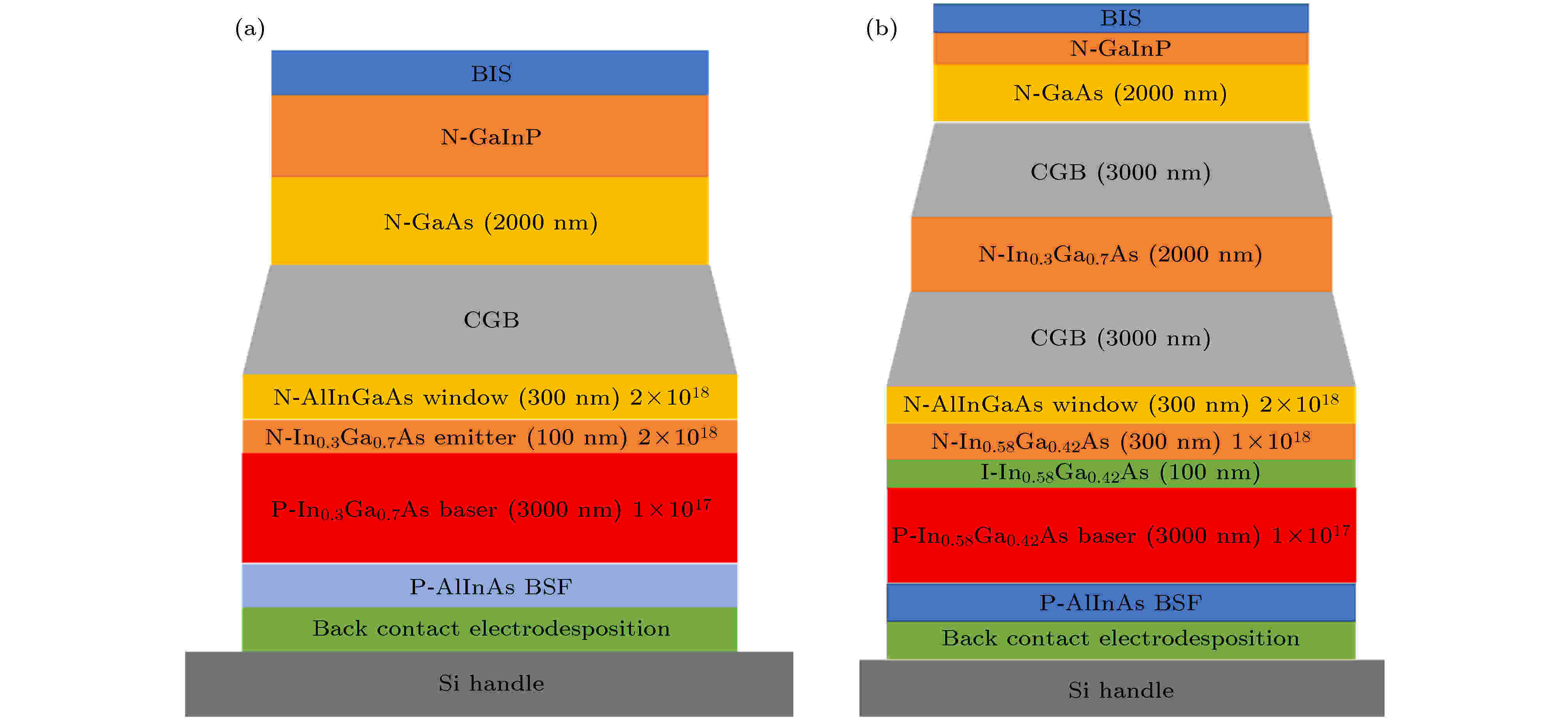
2020, 69 (22): 228802.
doi: 10.7498/aps.69.20200557
Abstract +
In this work, thermal annealing effects of InGaAs (1.0 eV) and InGaAs (0.7 eV) sub-cells for inverted metamorphic four junction (IMM4J) solar cells after being irradiated by 1 MeV electrons are investigated by using light I-V characteristic, dark I-V characteristic and spectral response. Annealing temperature range is 60–180 ℃ and annealing time is 0-180 min. The results indicate that the open-circuit voltage Voc, short-circuit current Isc, and maximum power Pmax of two sub-cells are gradually recovered with annealing time increasing, and the rate of recovery increases with annealing temperature increasing. Besides, the recovery rate of InGaAs (1.0 eV) sub-cell is less than that of InGaAs (0.7 eV) sub-cell under the same annealing temperature and time. Double exponential model is used to fit the dark I-V curve for the key parameters (the serial resistant Rs, the parallel resistant Rsh, the diffusion current Is1 and the recombination current Is2). It is found that Rs, Is1 and Is2 of two sub-cells decrease gradually and Rsh increases during annealing and the rate of recovery increases with annealing temperature rising. However, the recovery of Is1 and Is2 of InGaAs(1.0 eV) are much greater than that of InGaAs(0.7 eV). The equivalent model between short-circuit current density (Jsc) and defect concentration (N) induced by irradiation and annealing is established. N changes follow the first reaction kinetics, and the rate constant follows the Arrhenius equation with the annealing temperature. Therefore, the thermal annealing activation energy of InGaAs(1.0 eV) and InGaAs(0.7 eV) sub-cells are 0.38 eV and 0.26 eV, respectively. These efforts will contribute to the IMM4J solar cells, in particular, to space-based applications.








